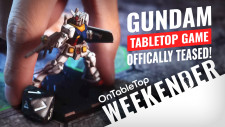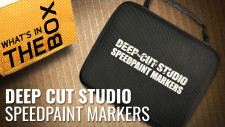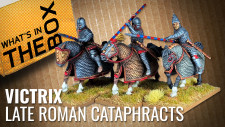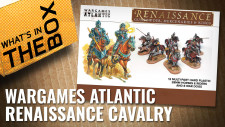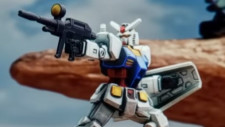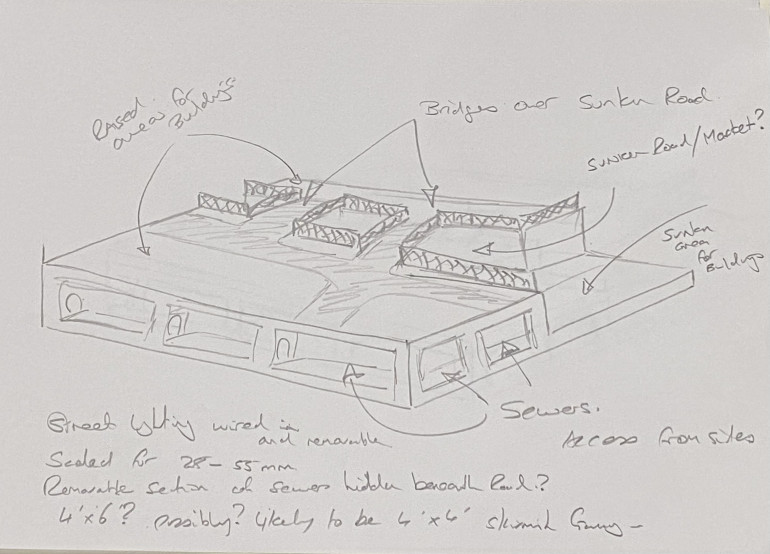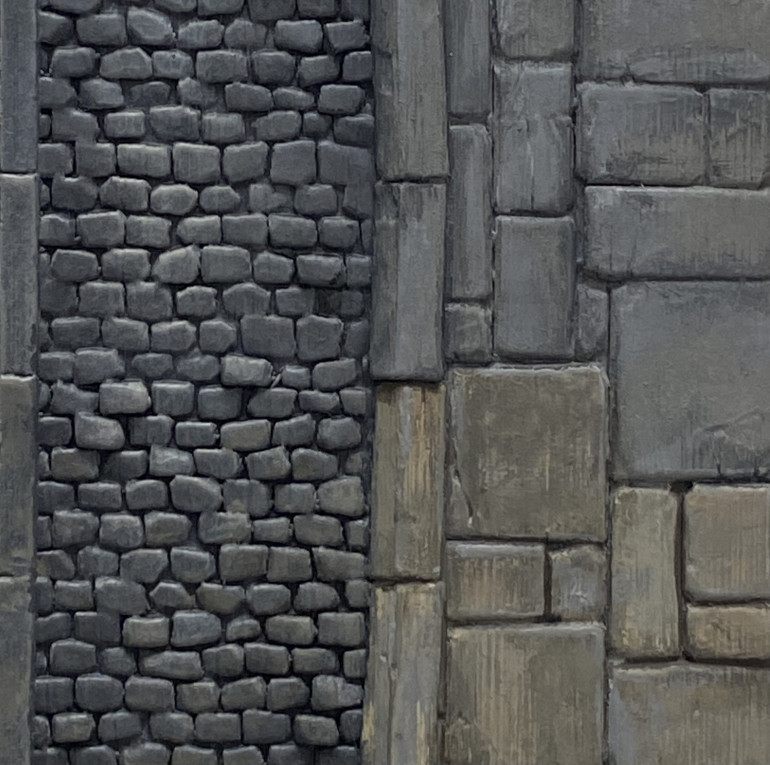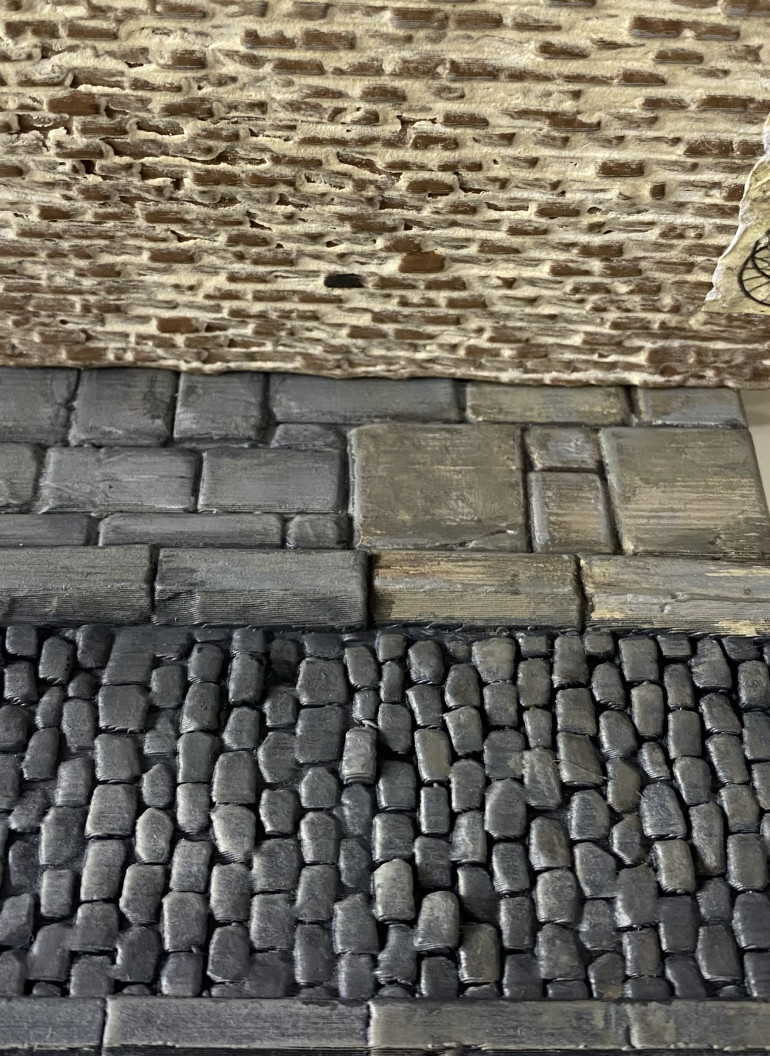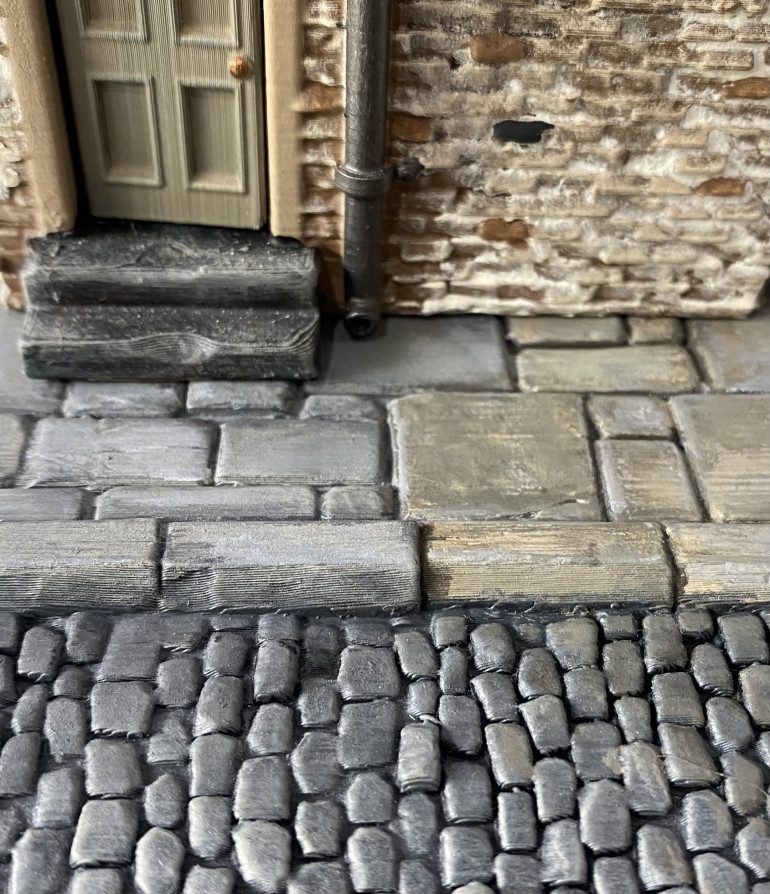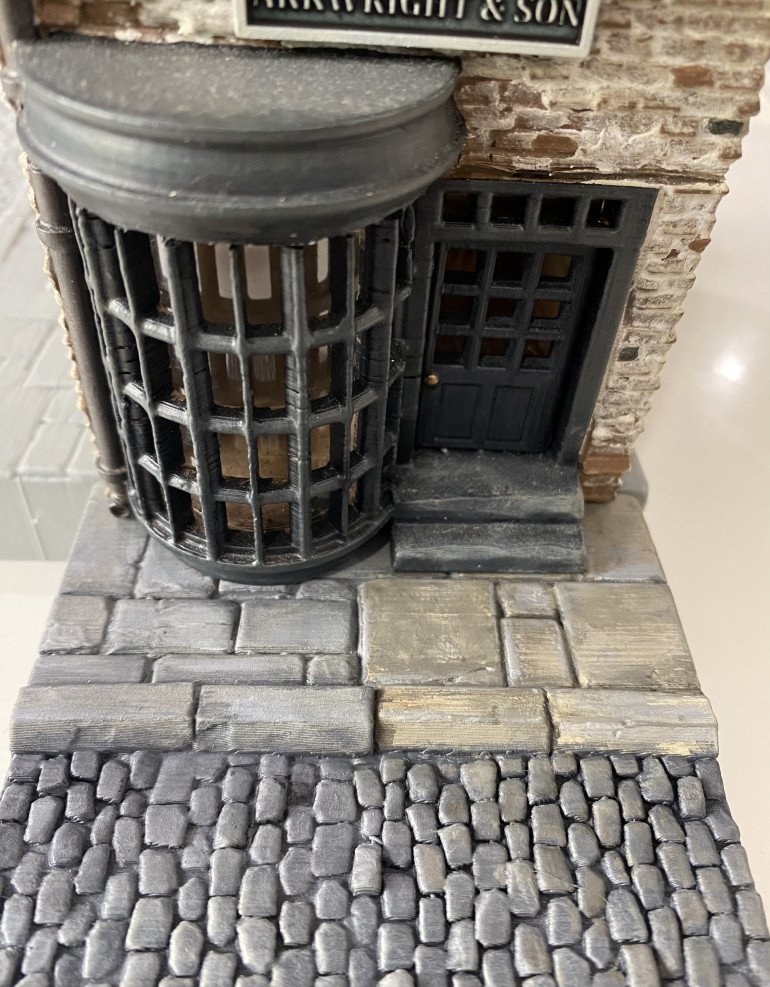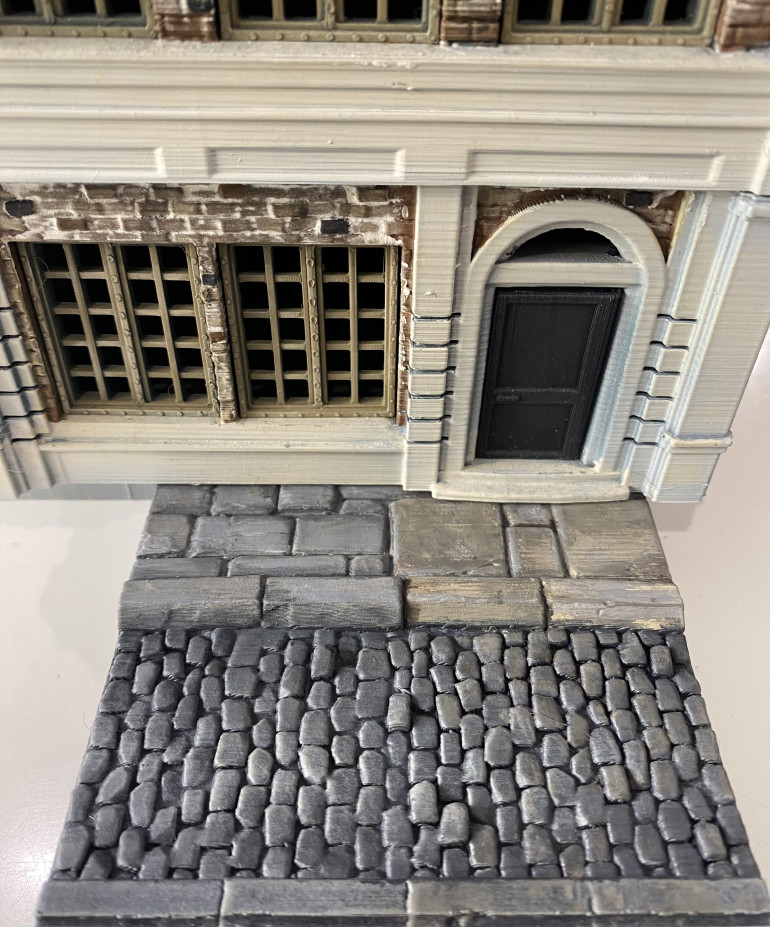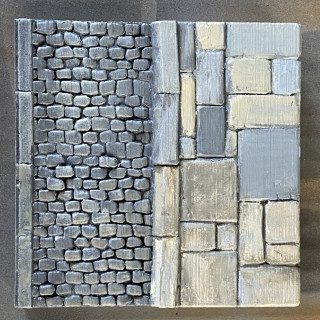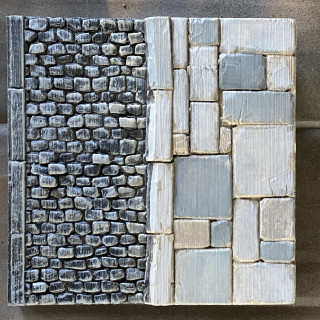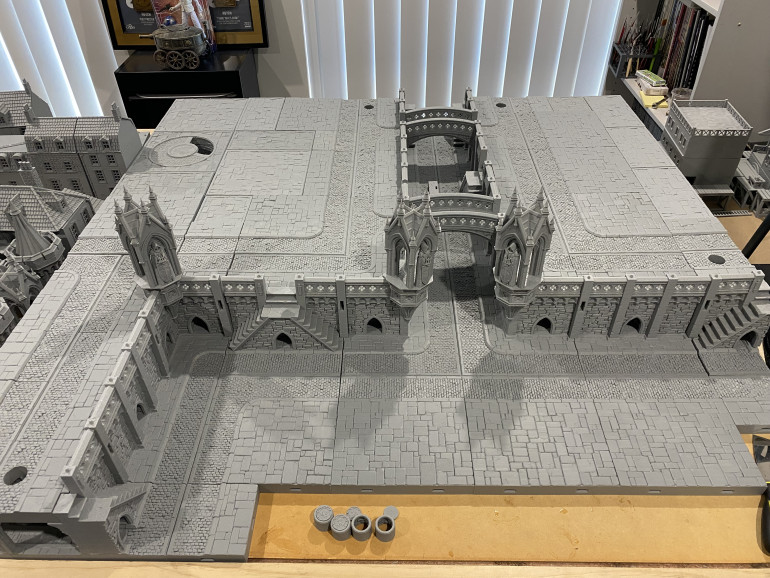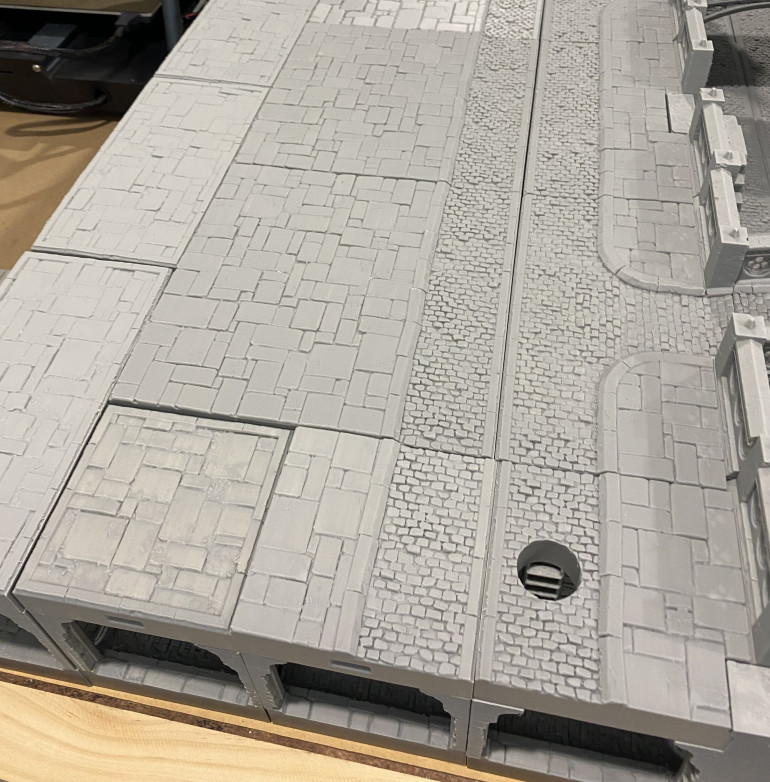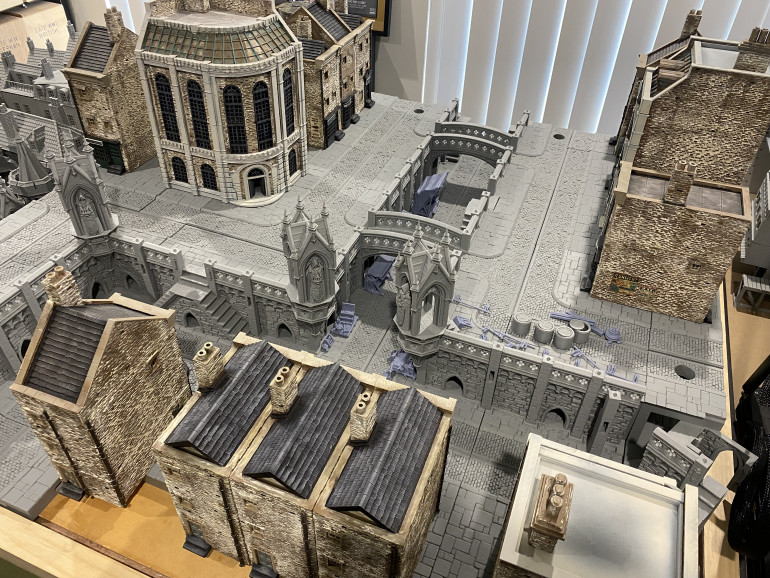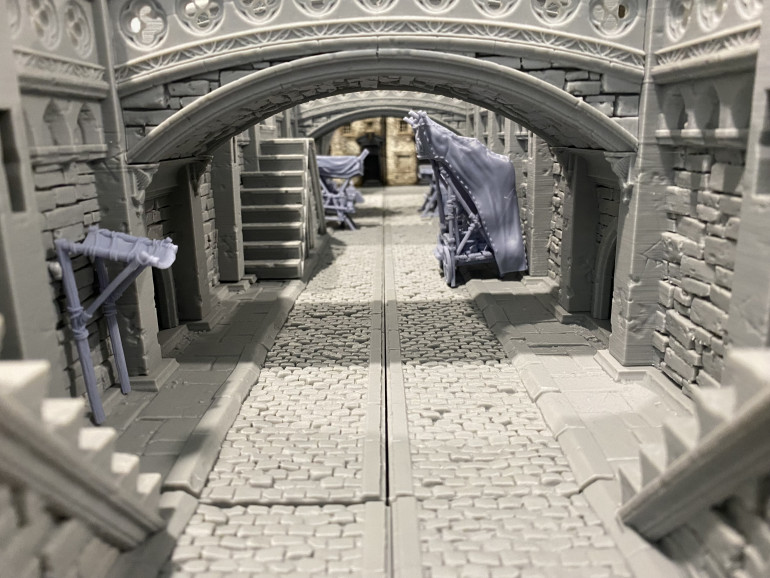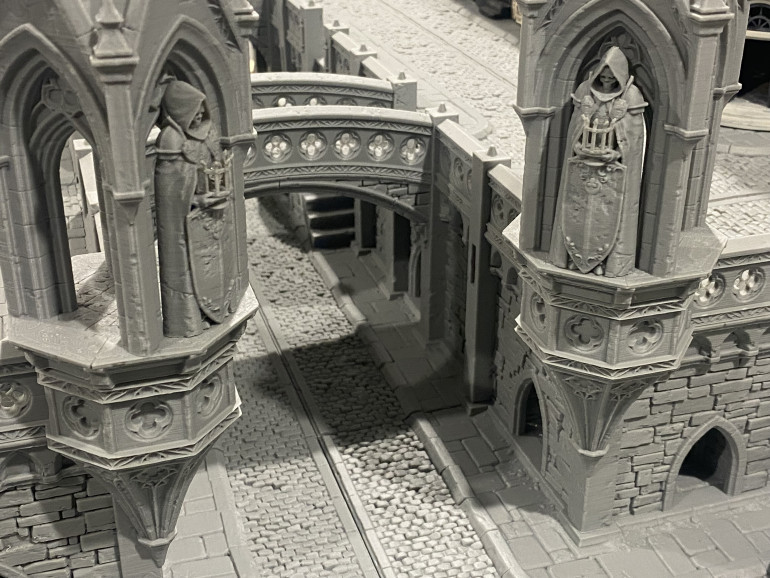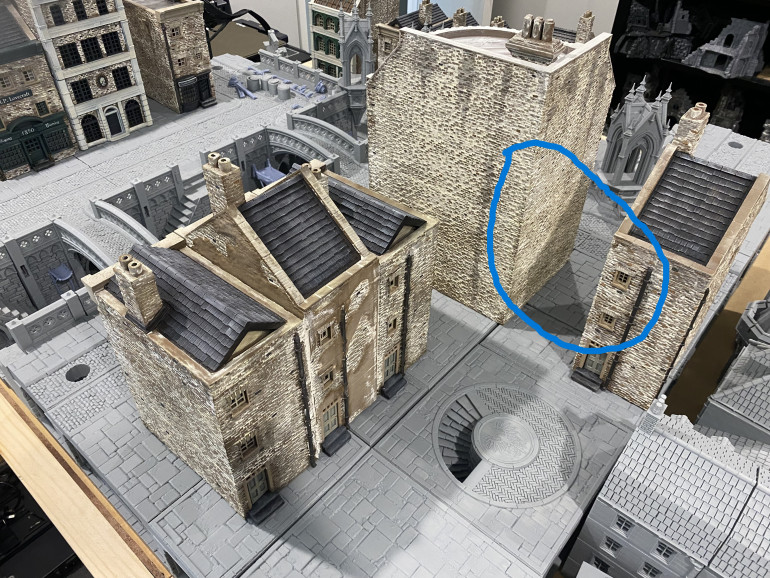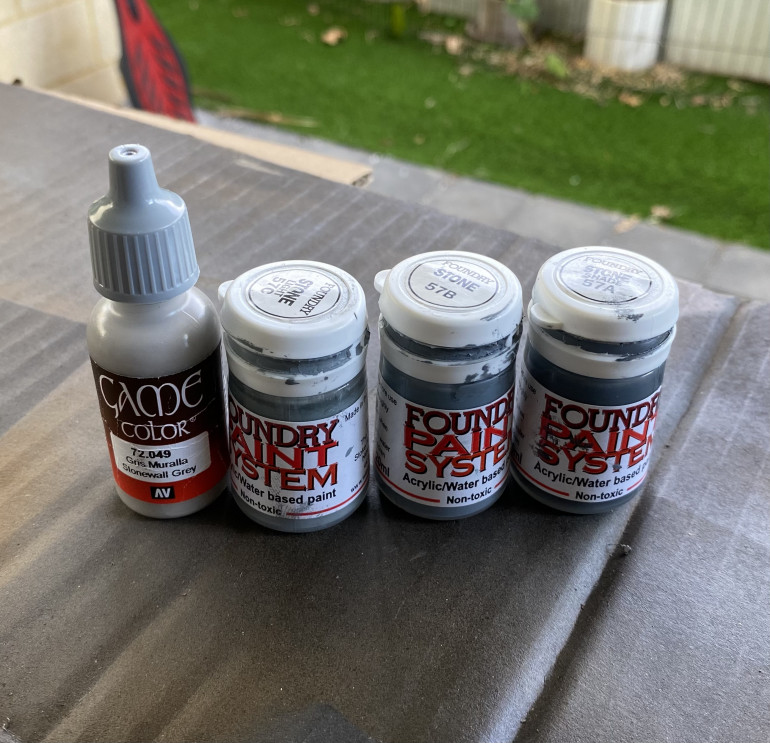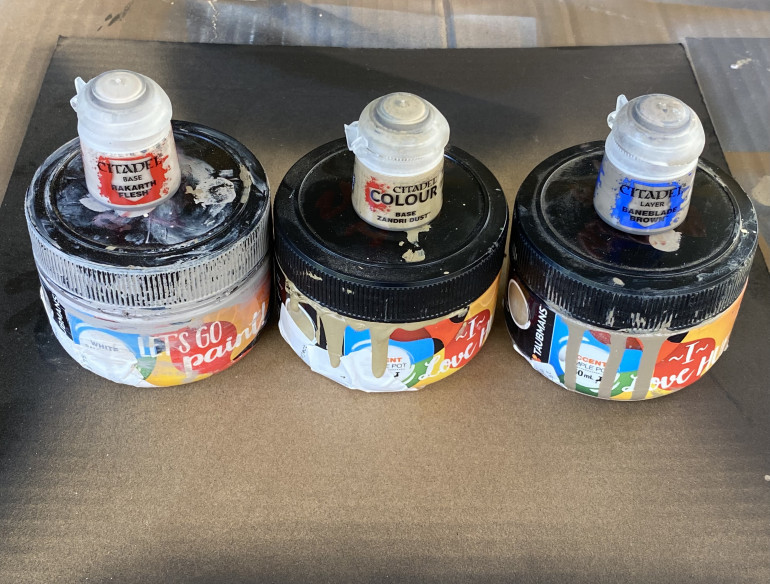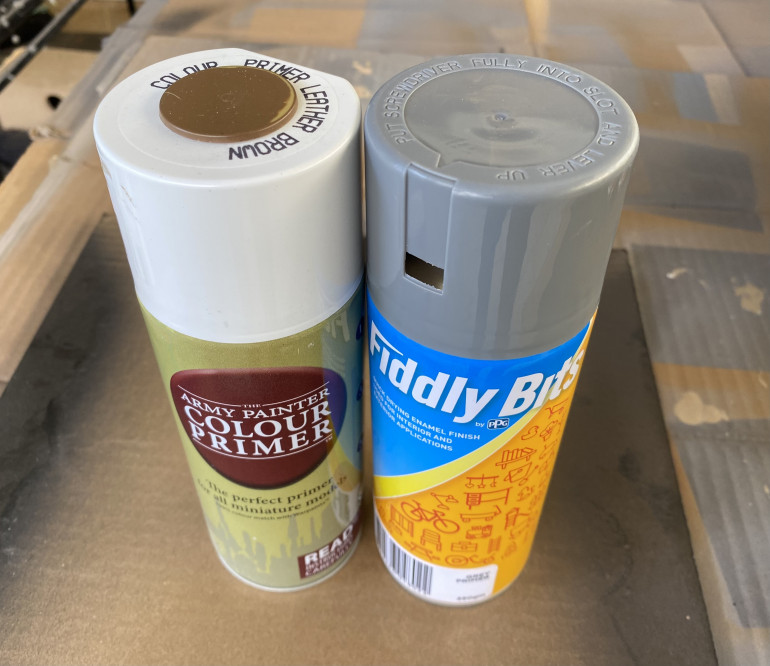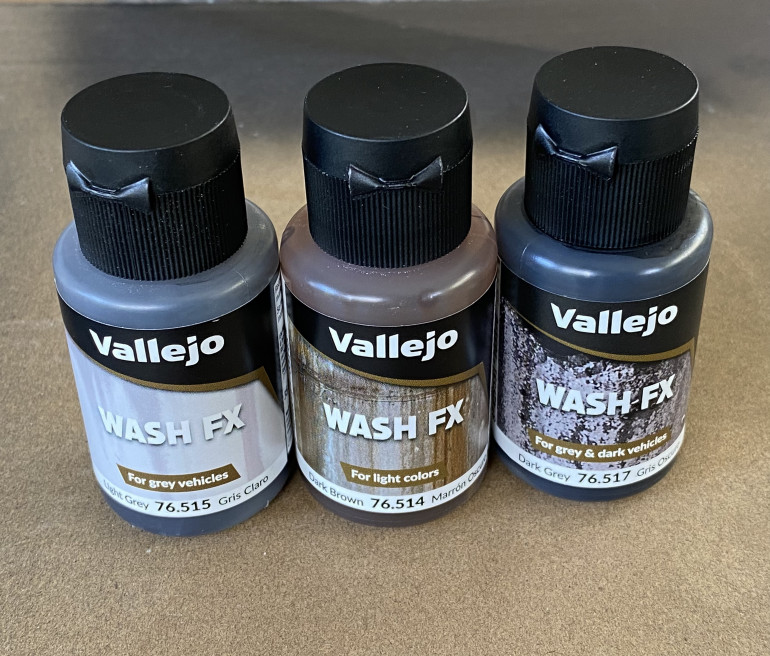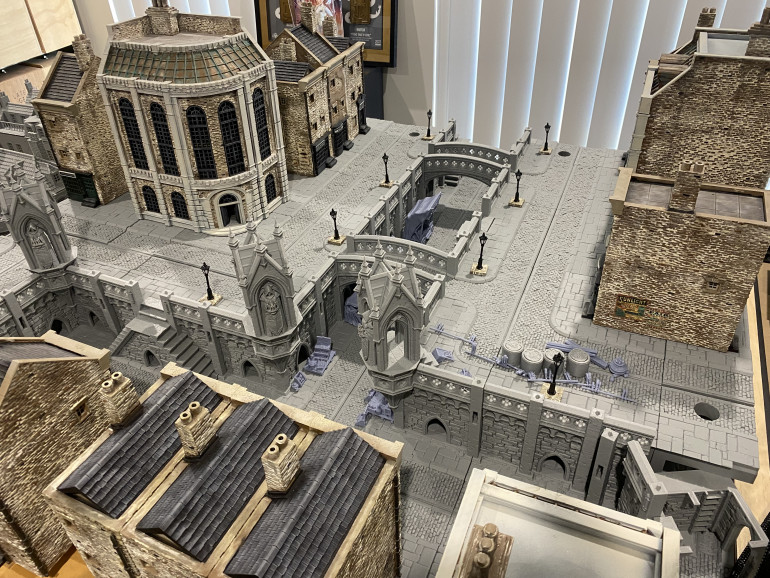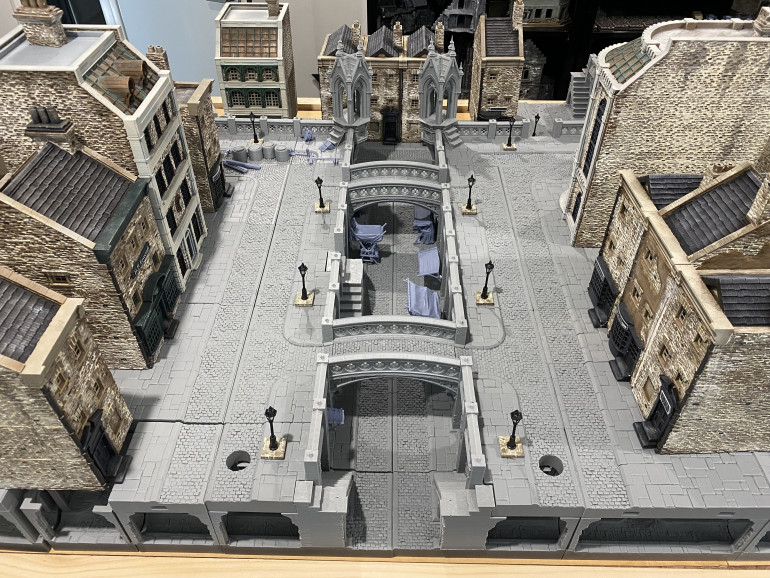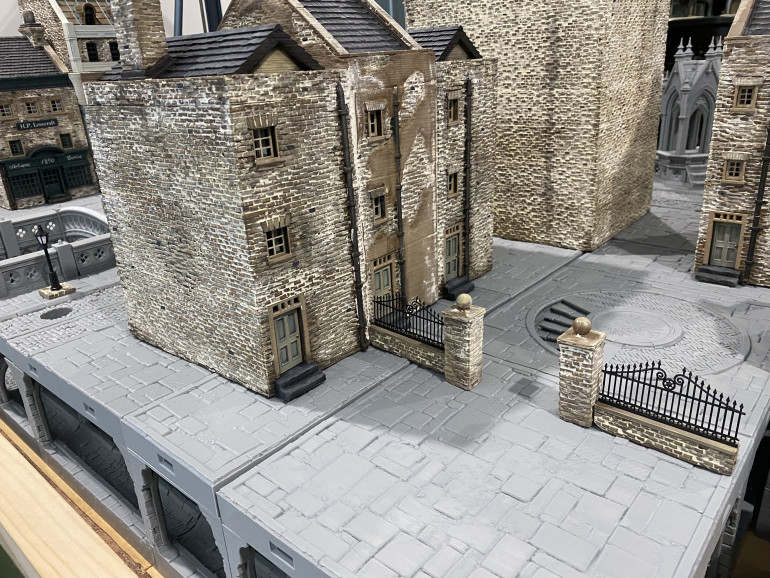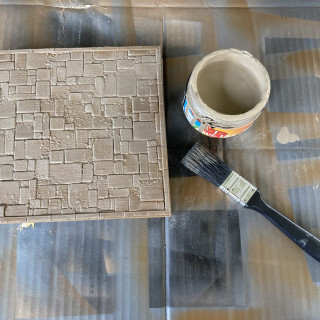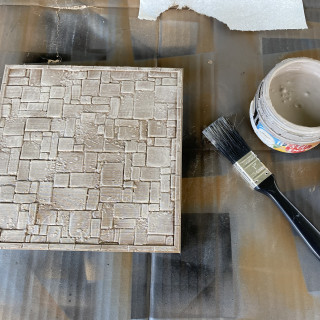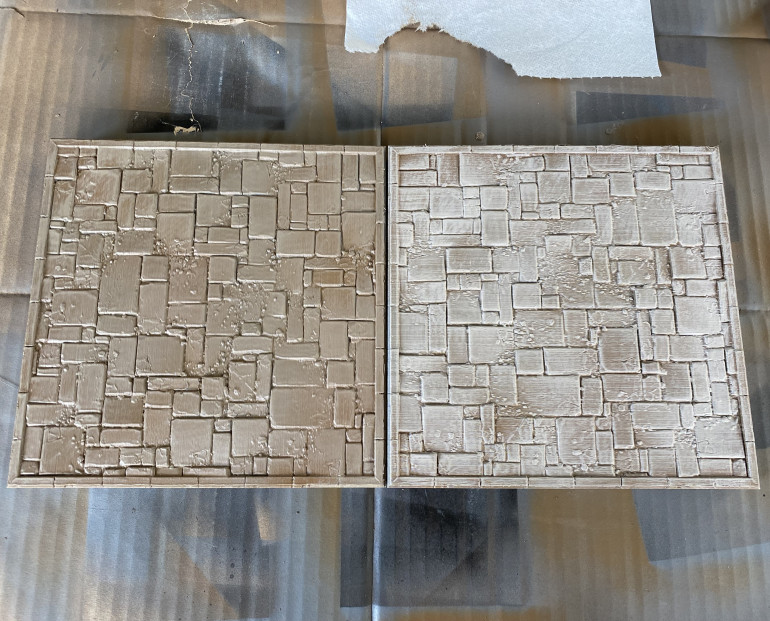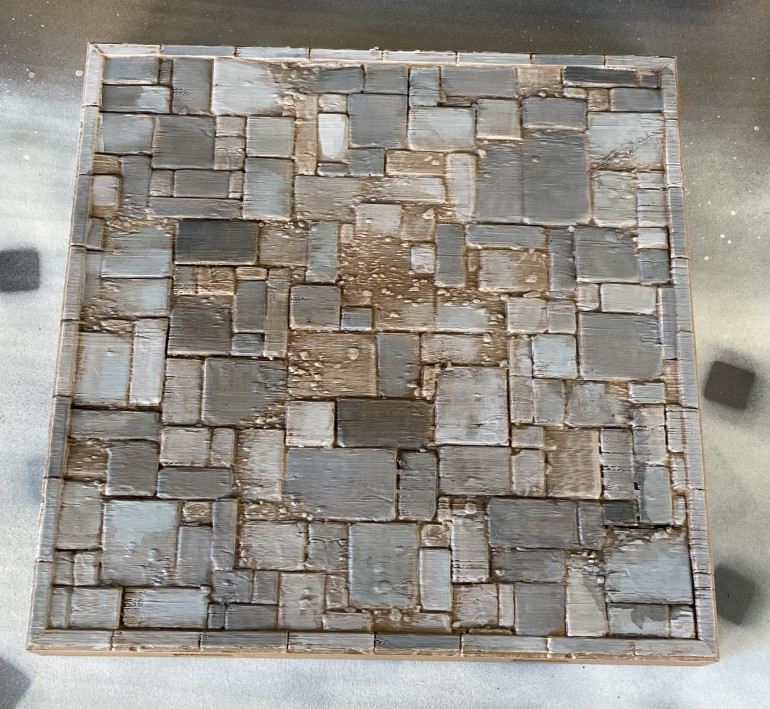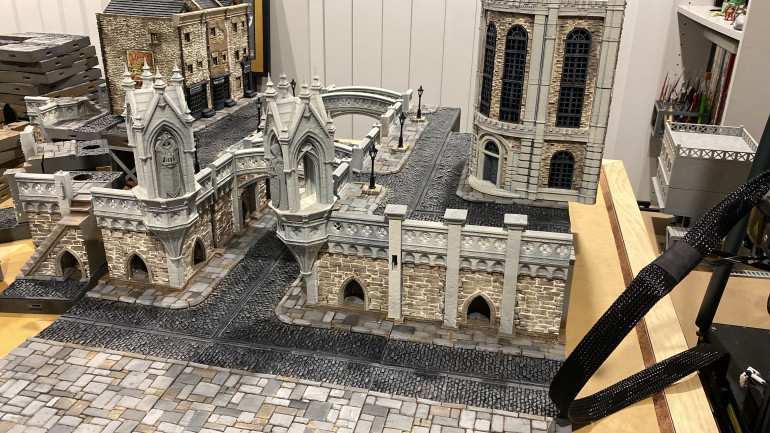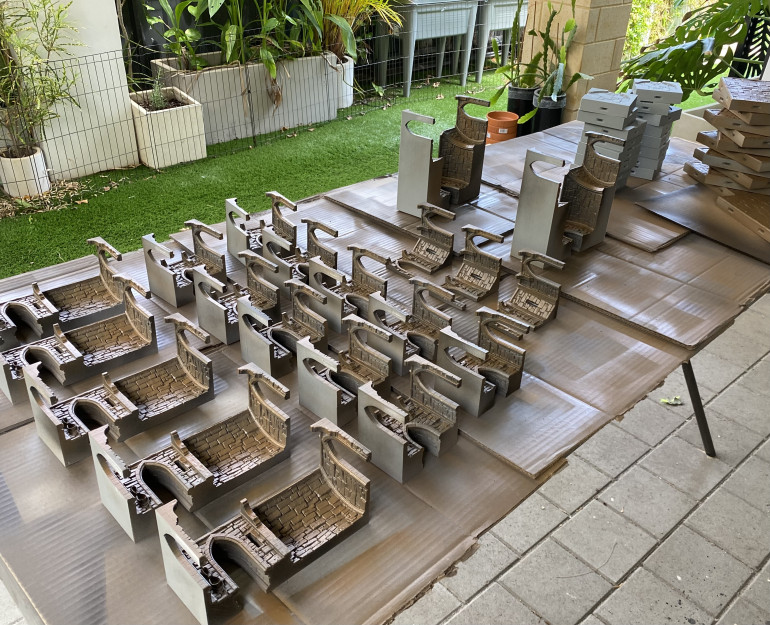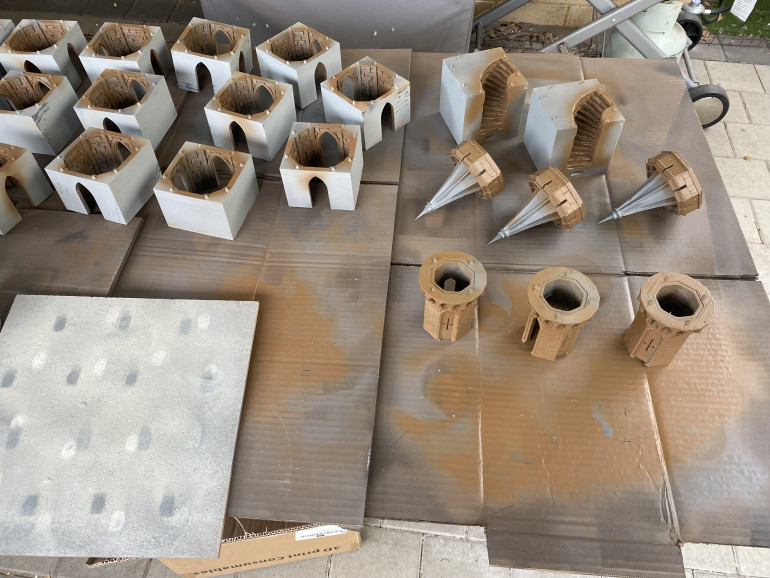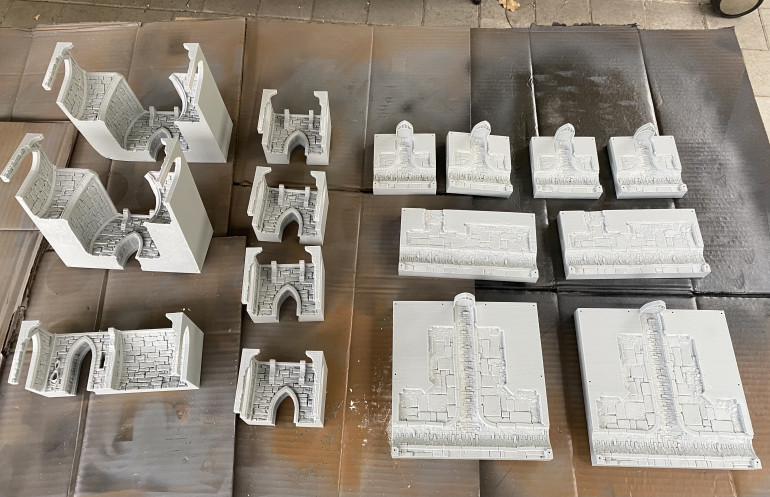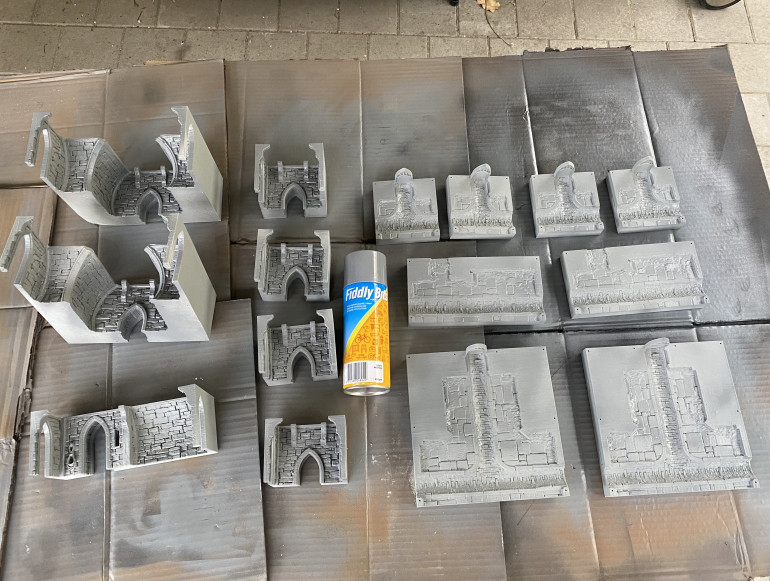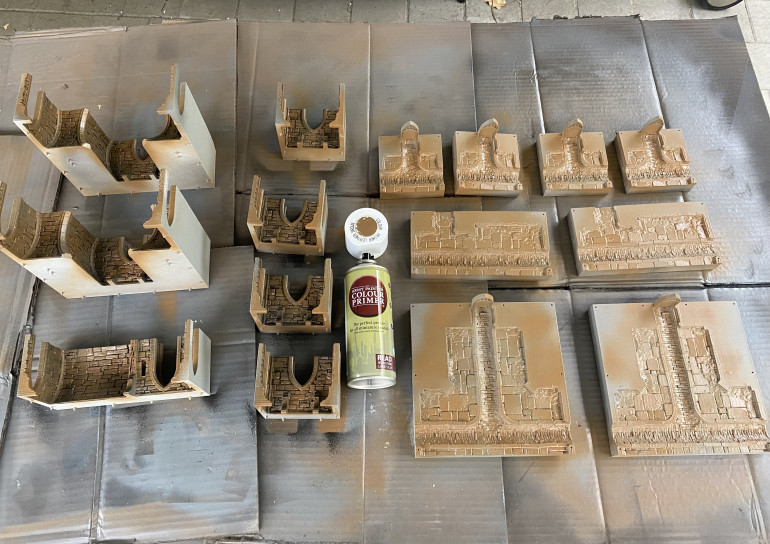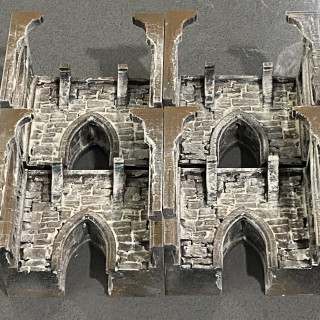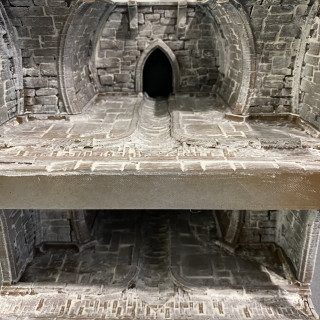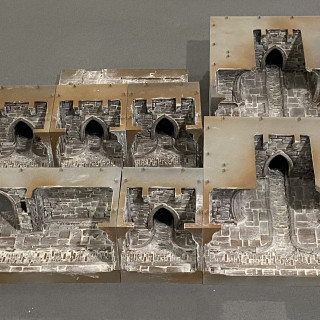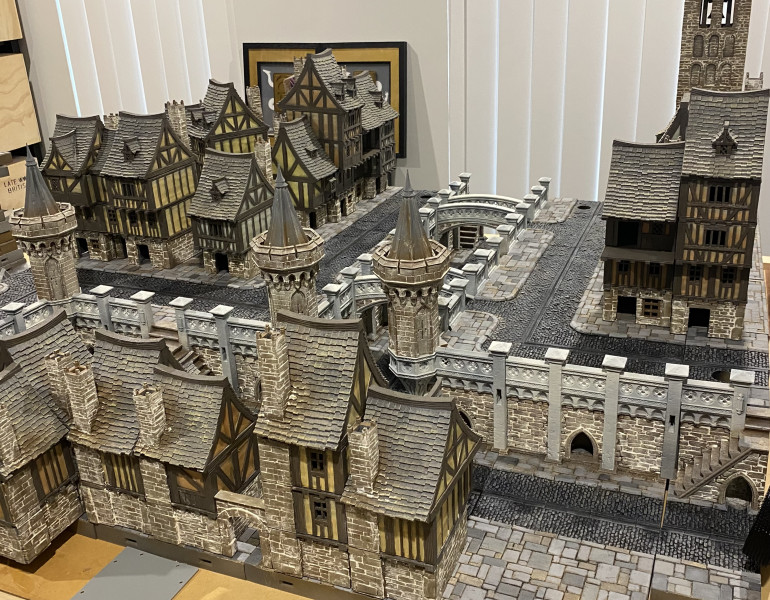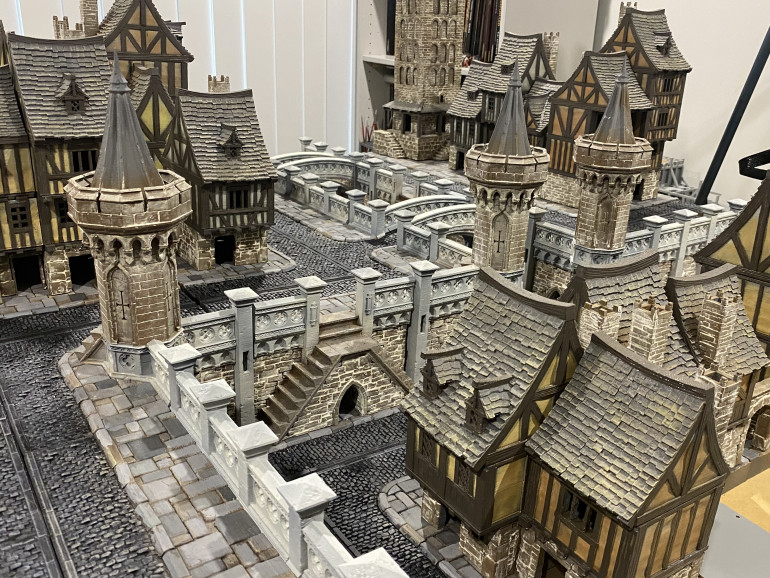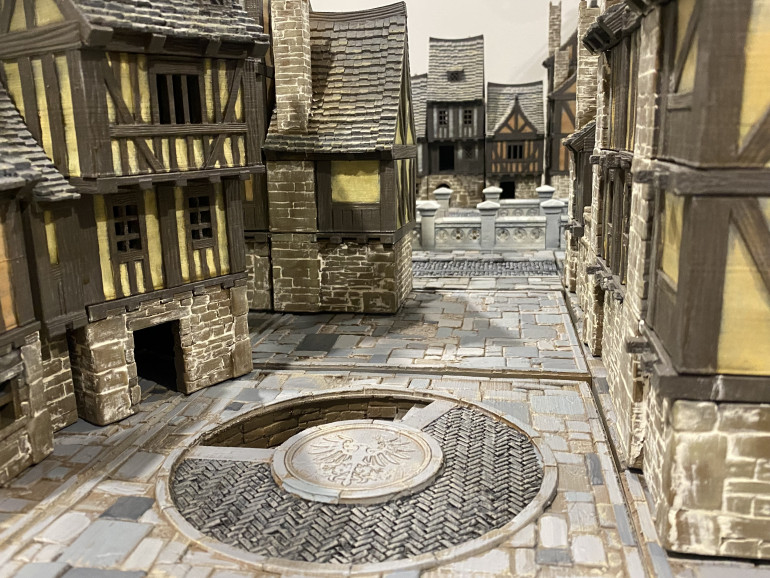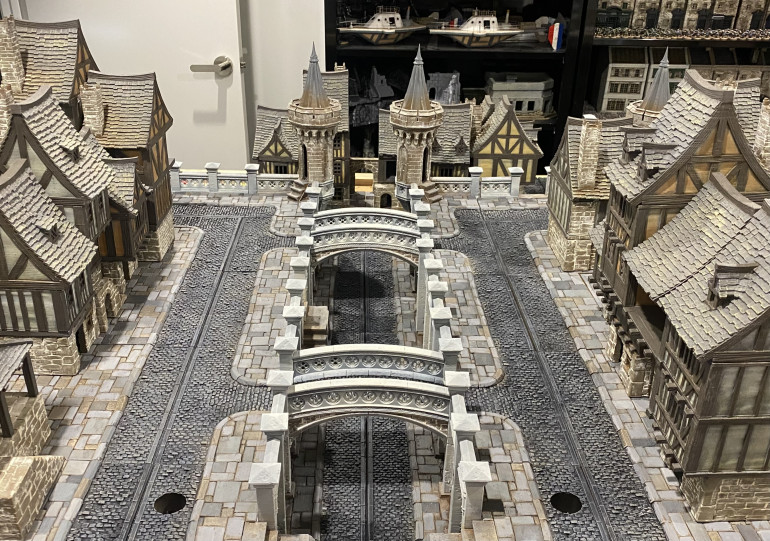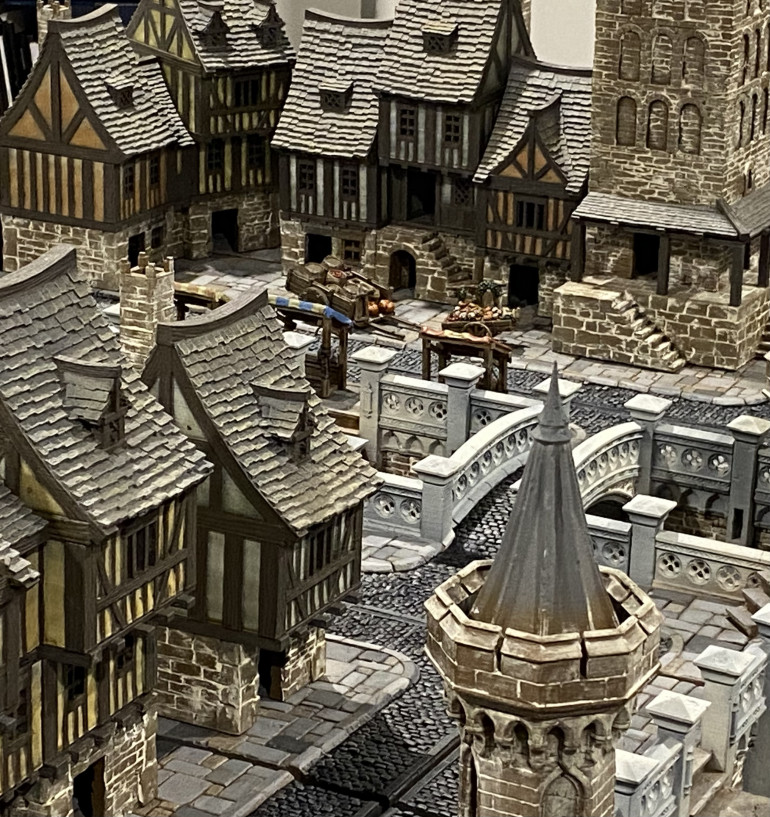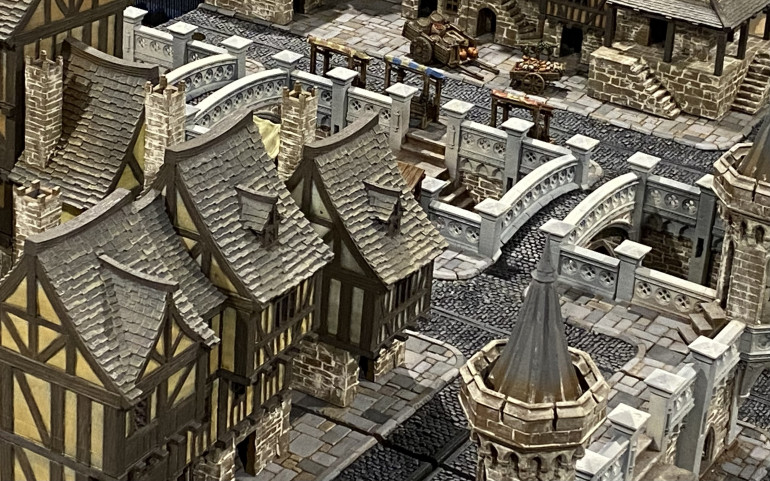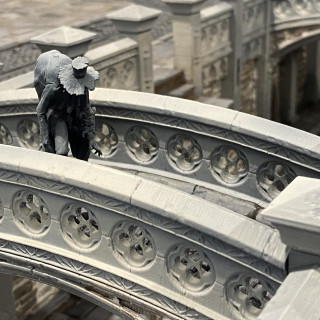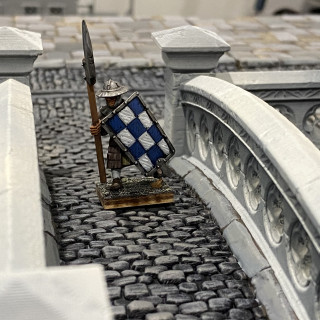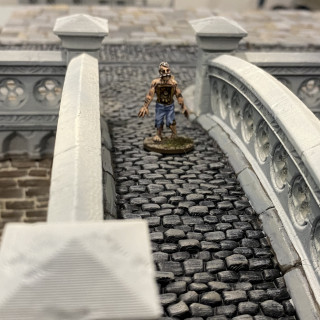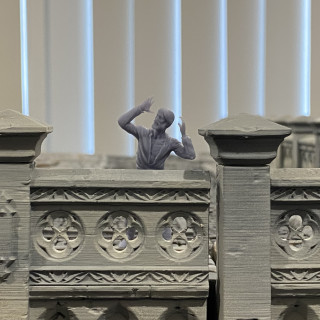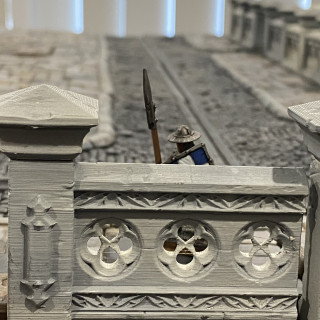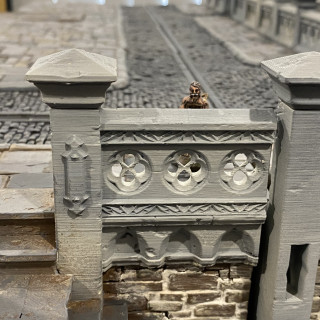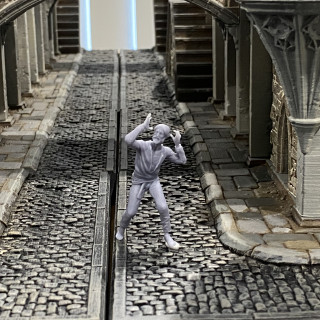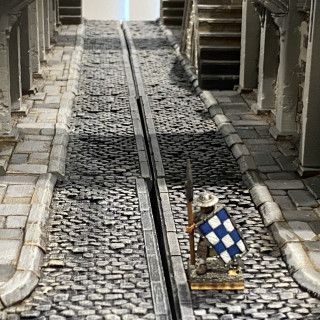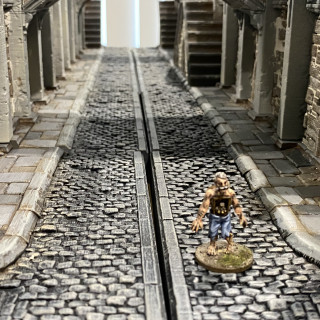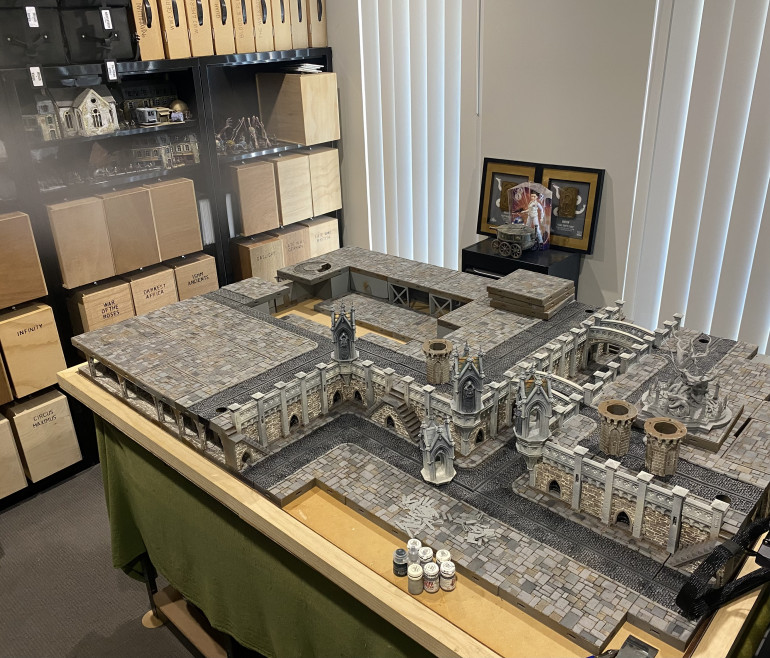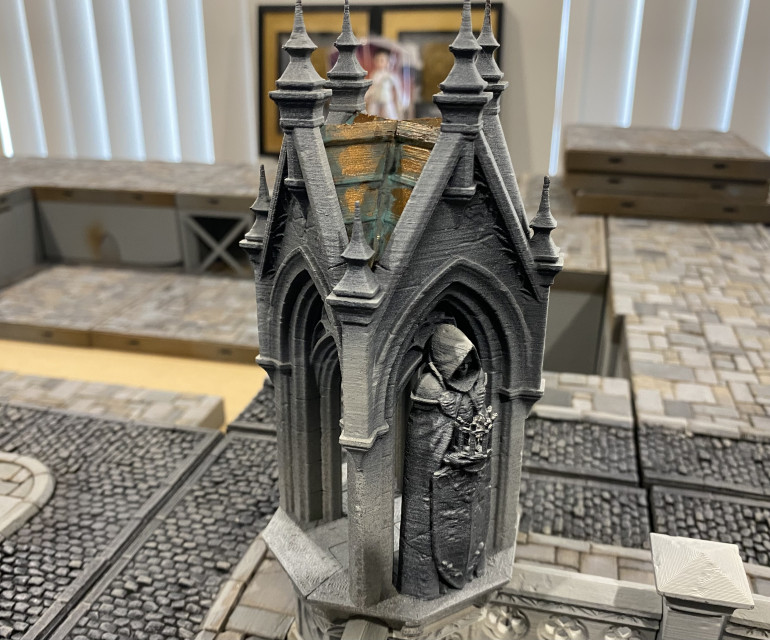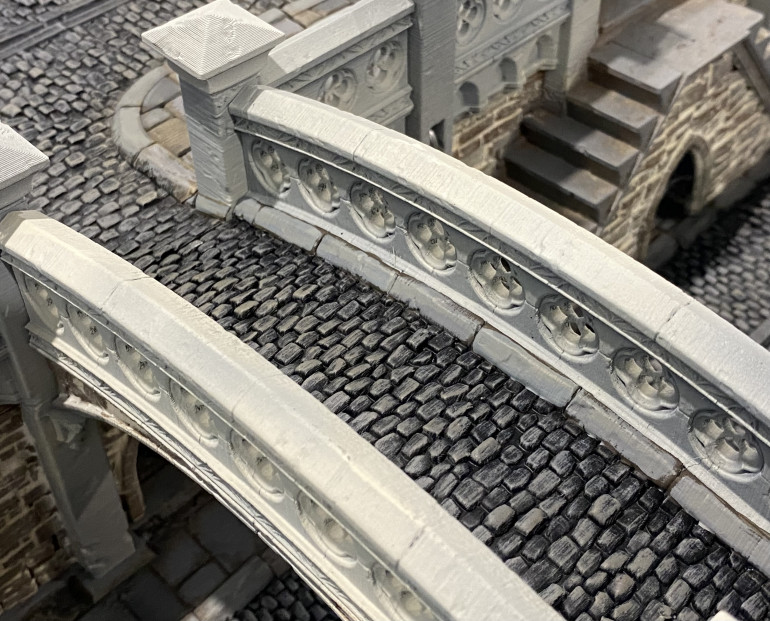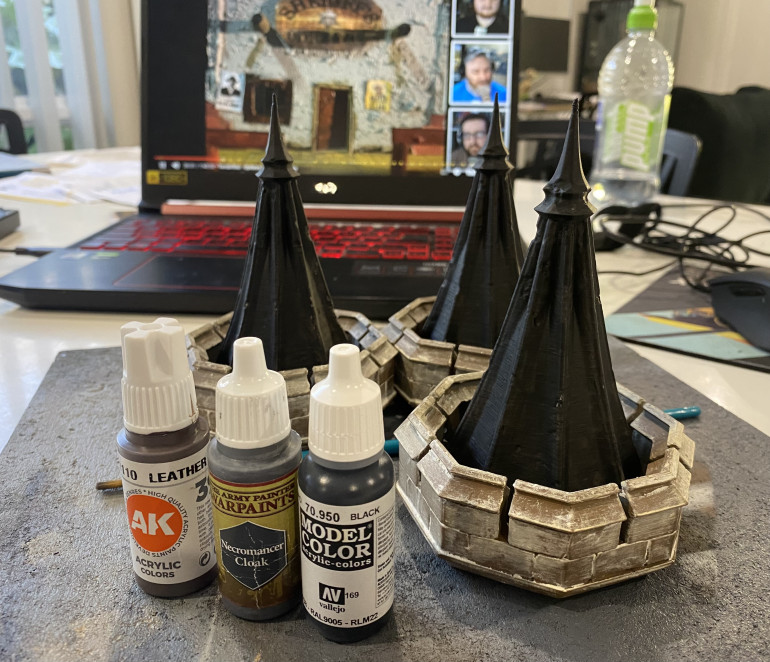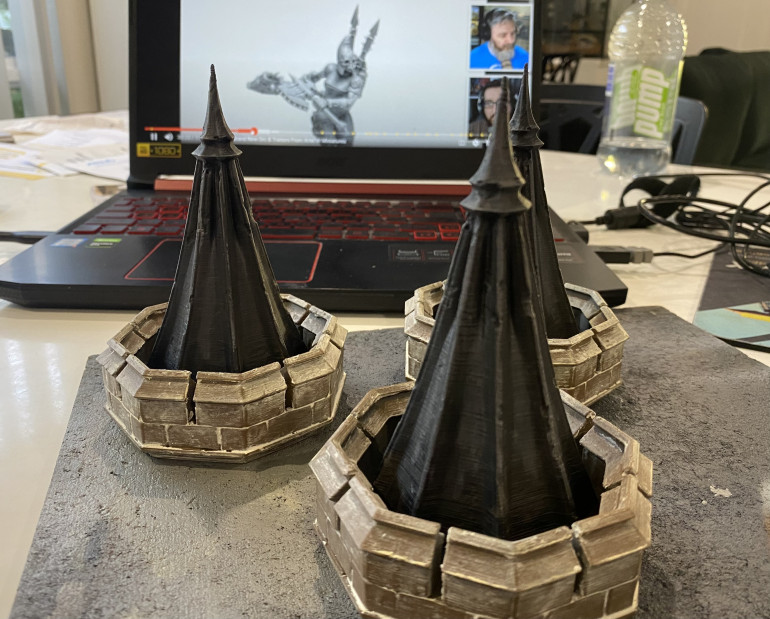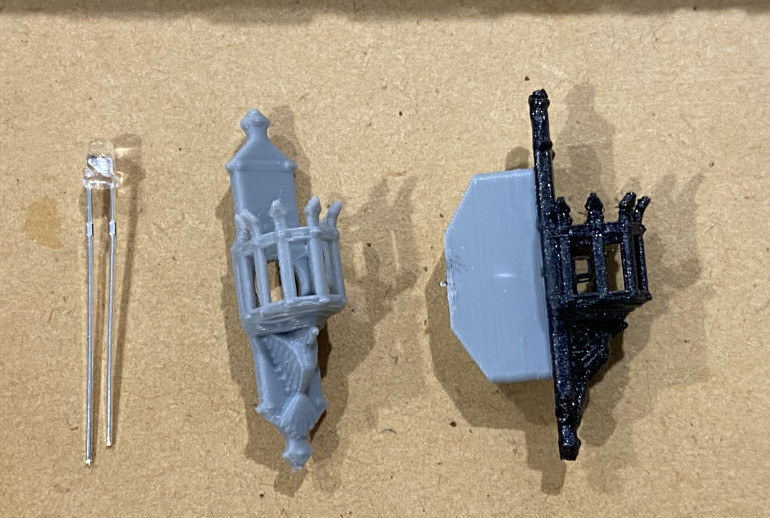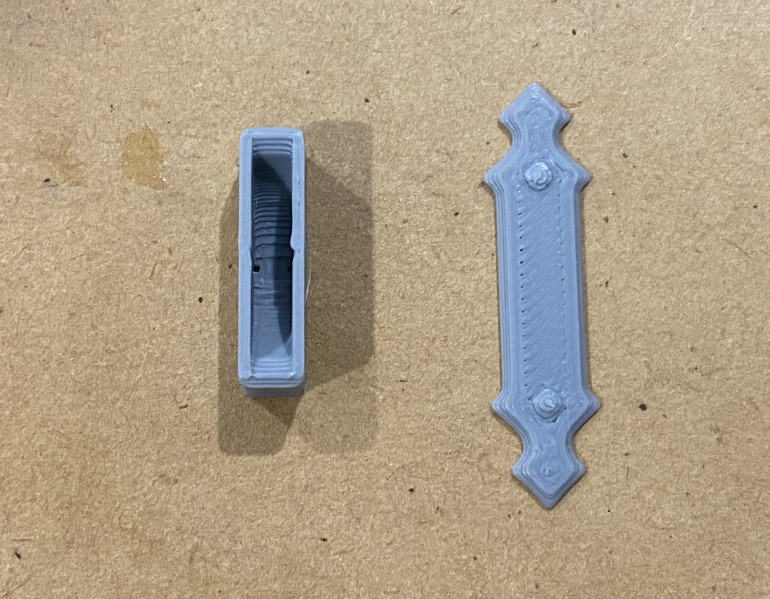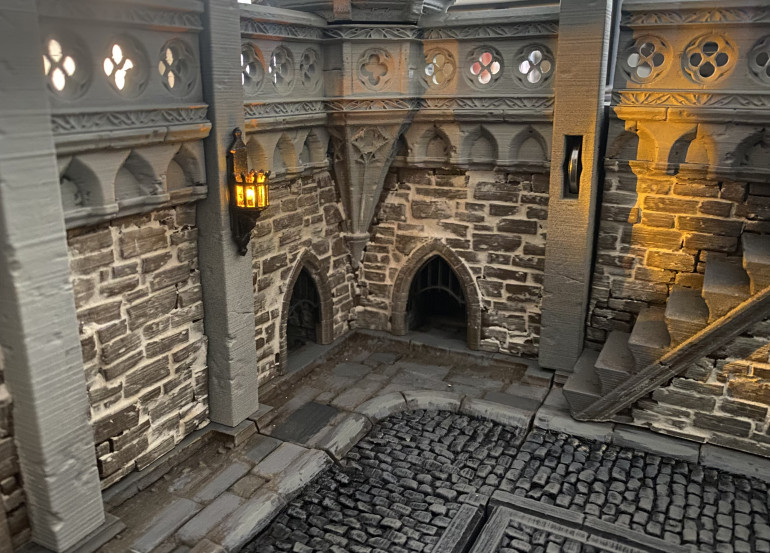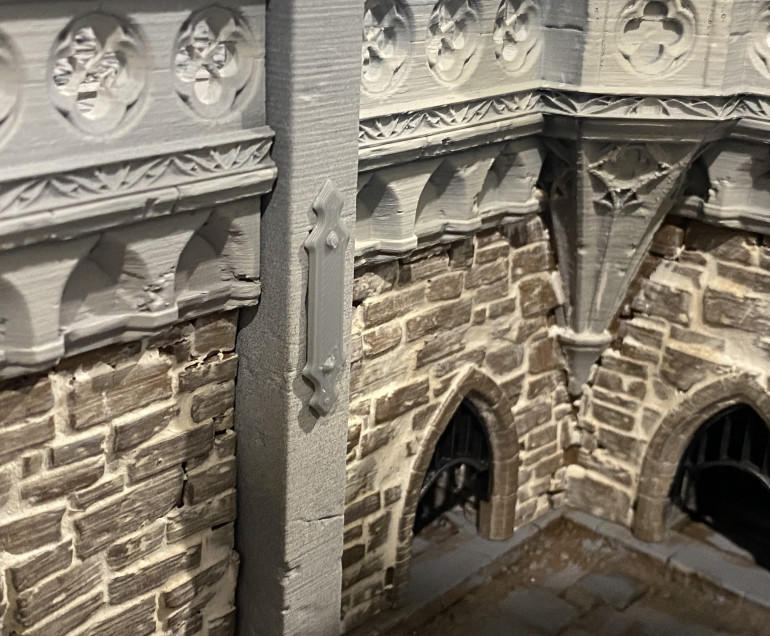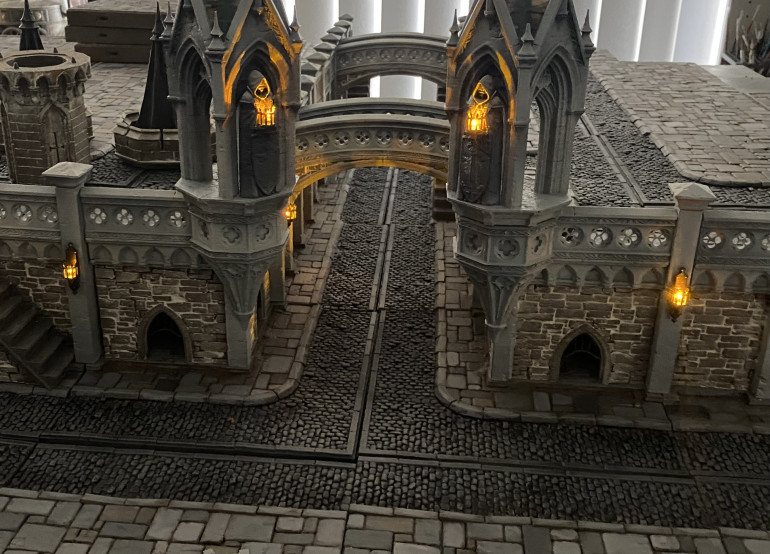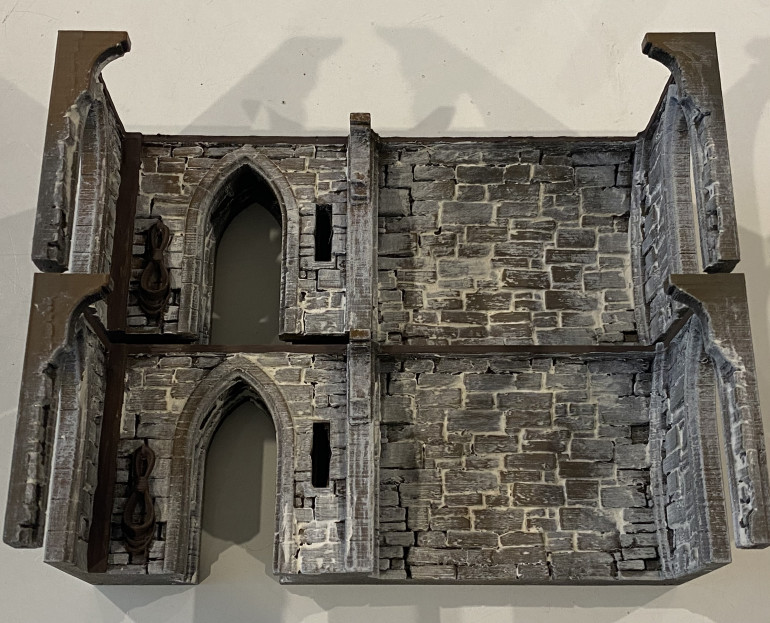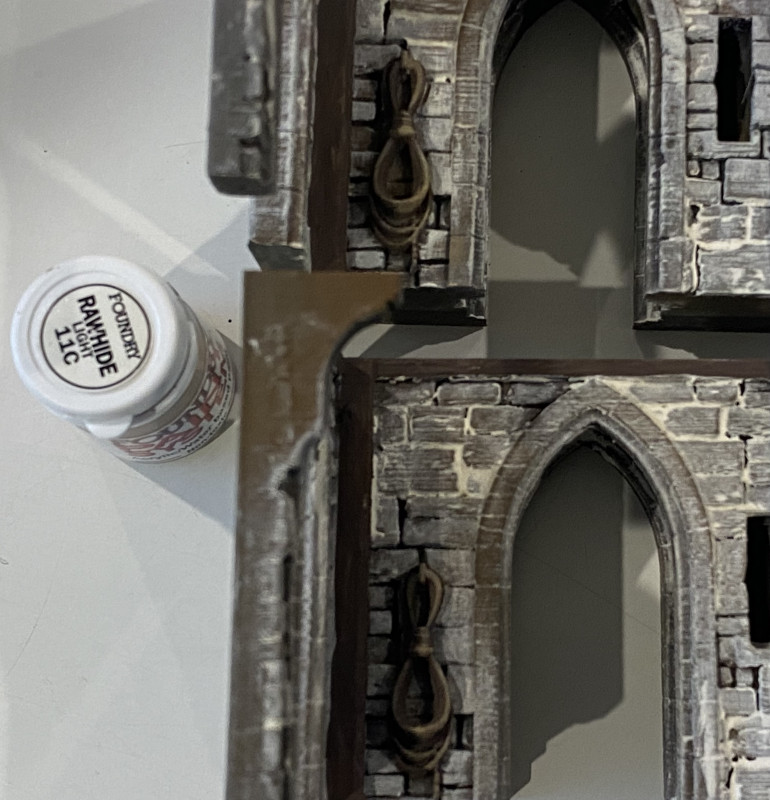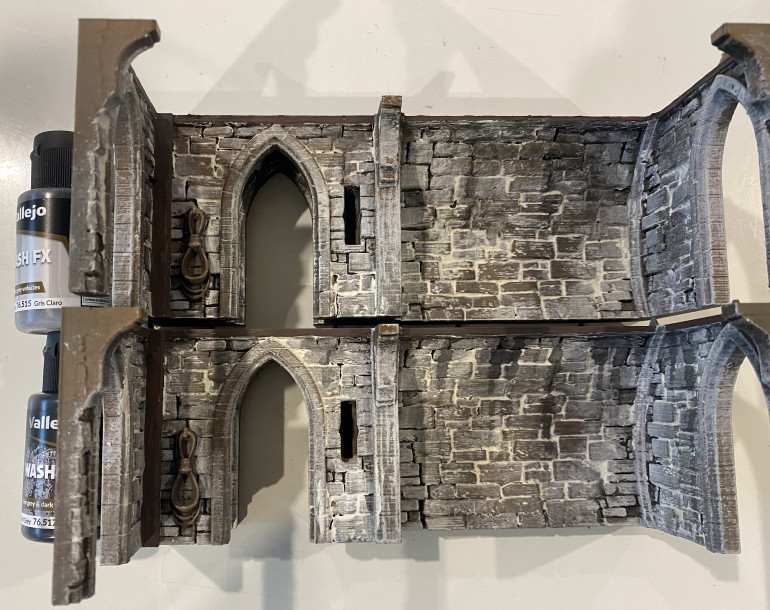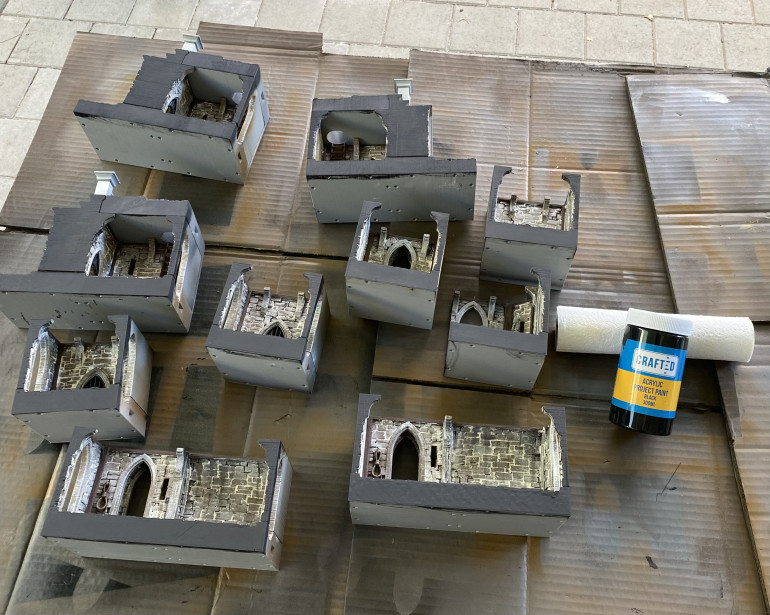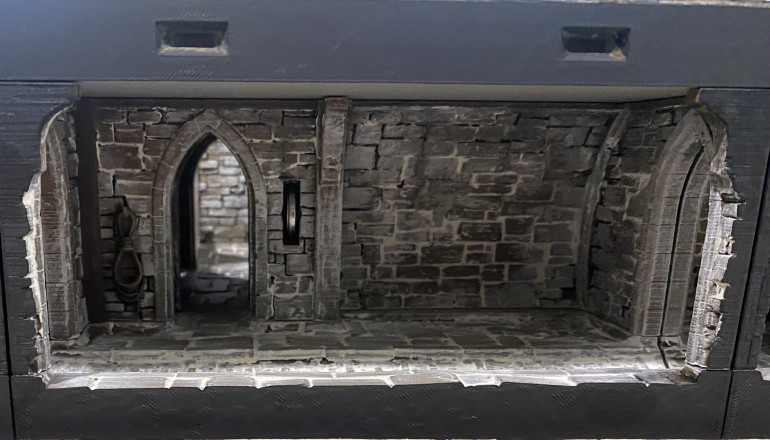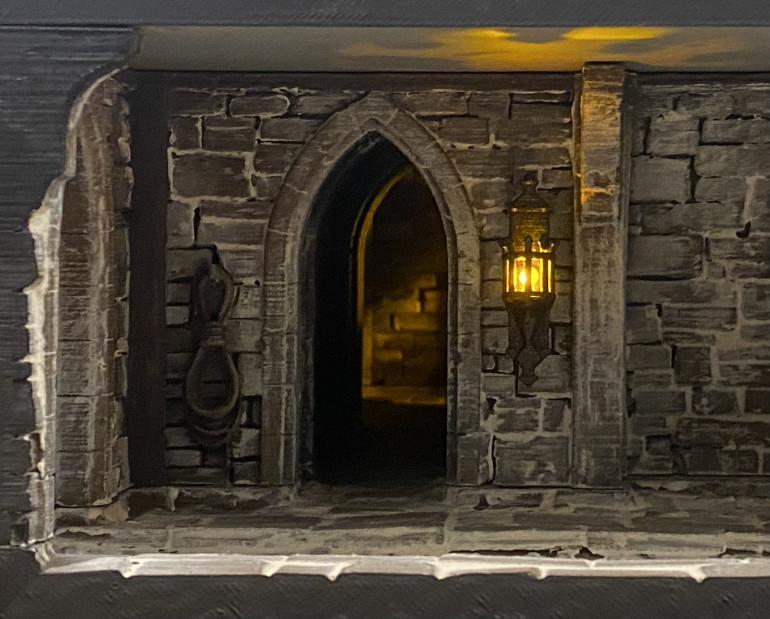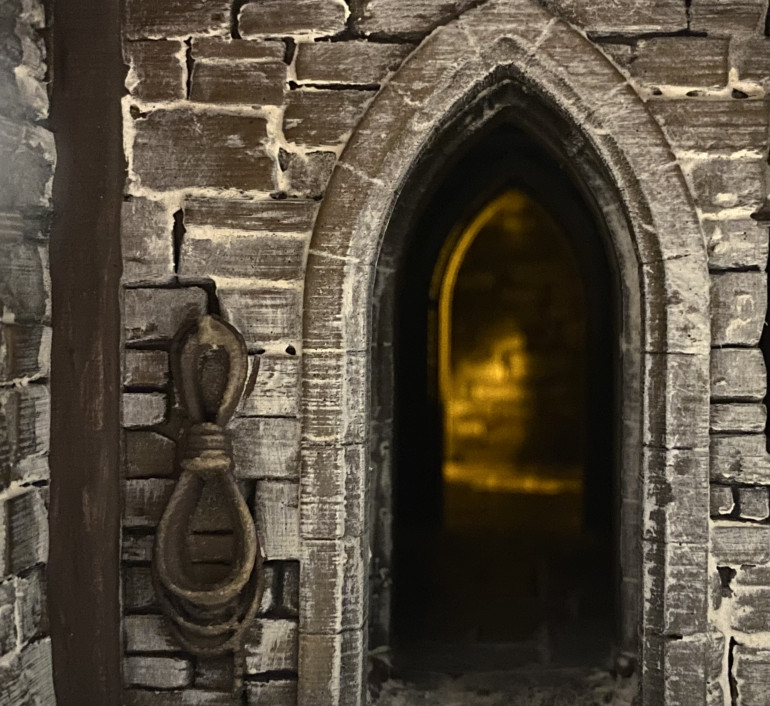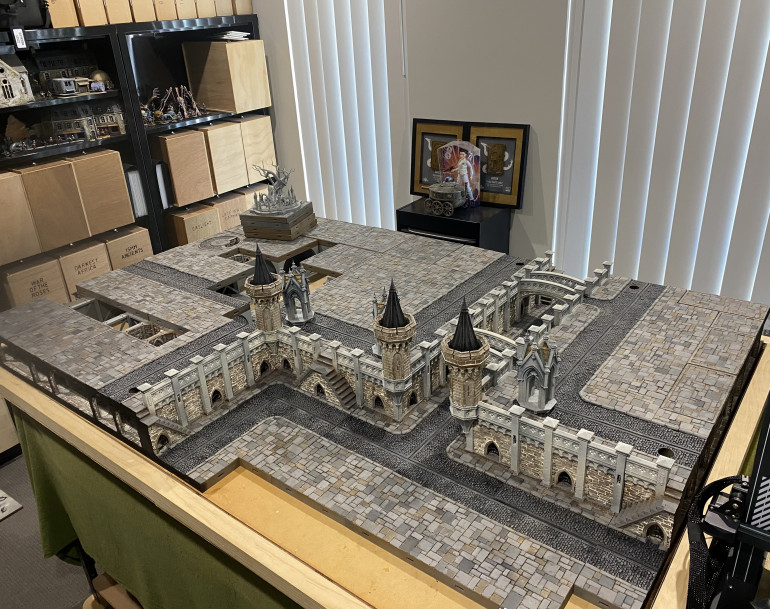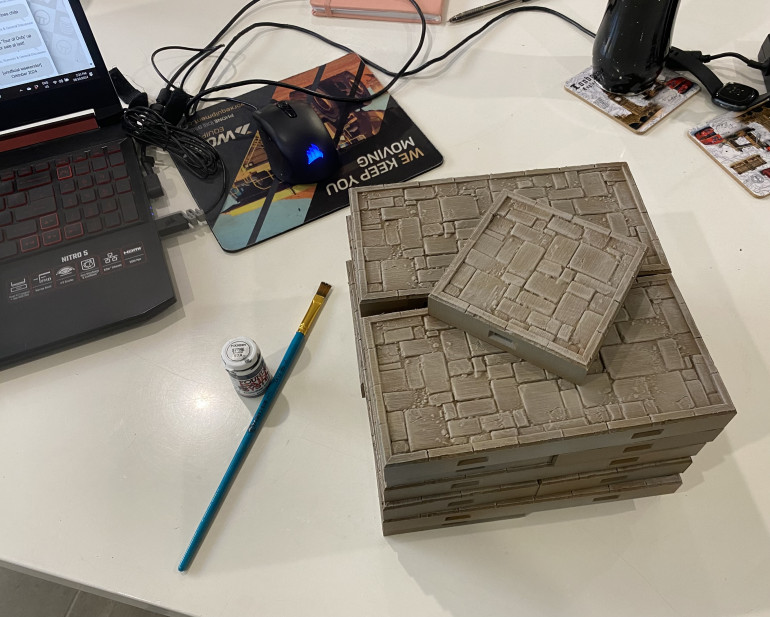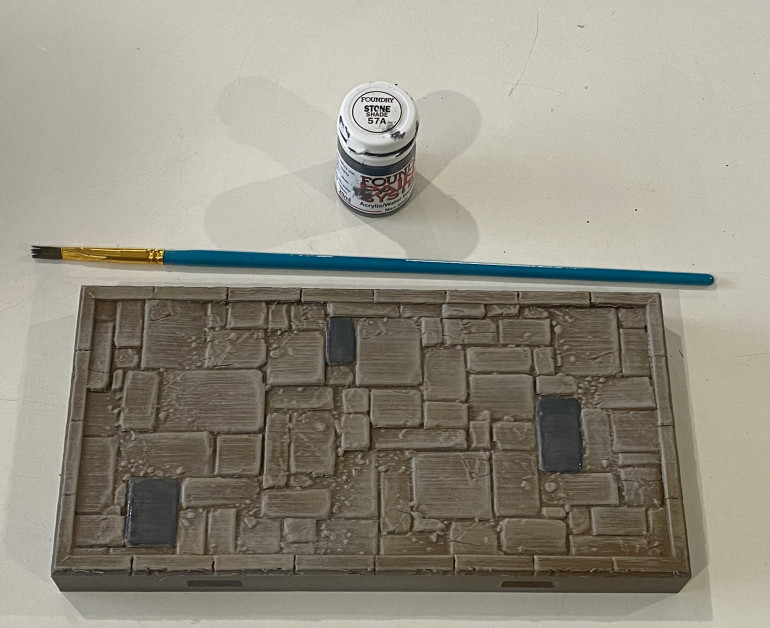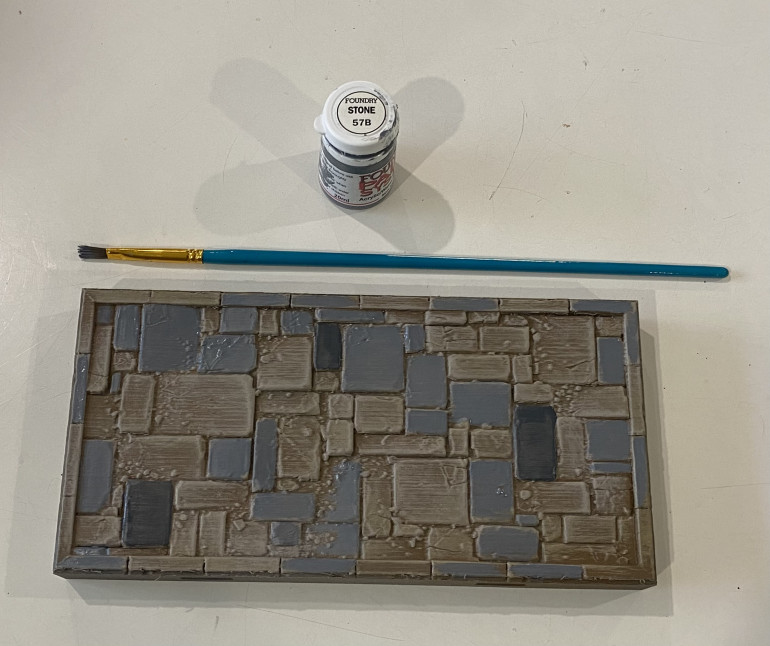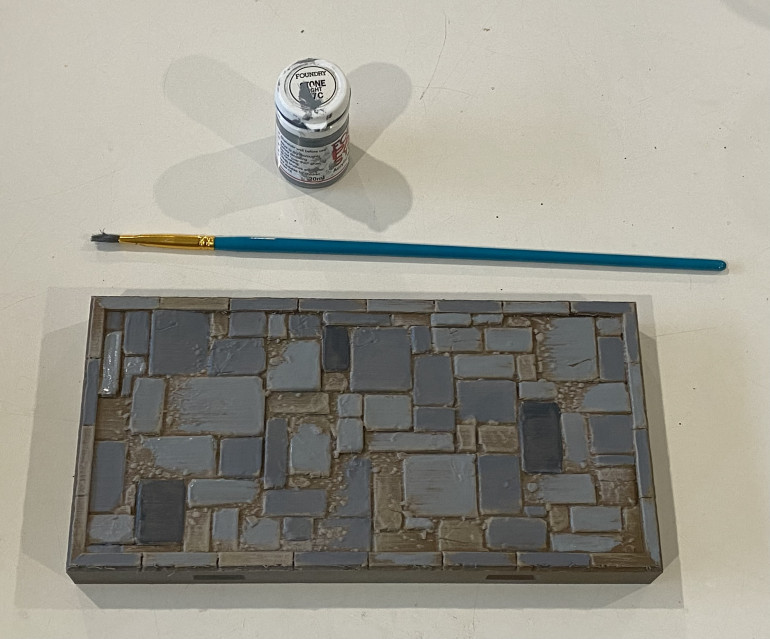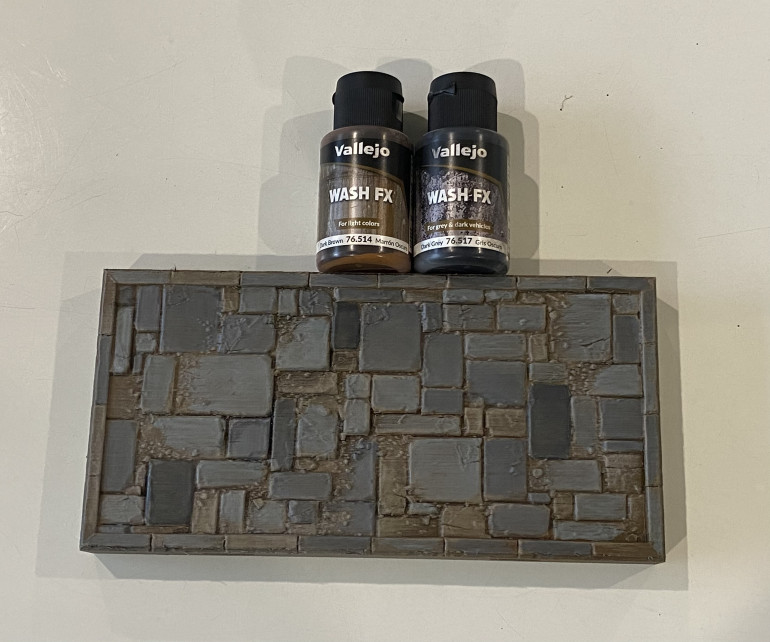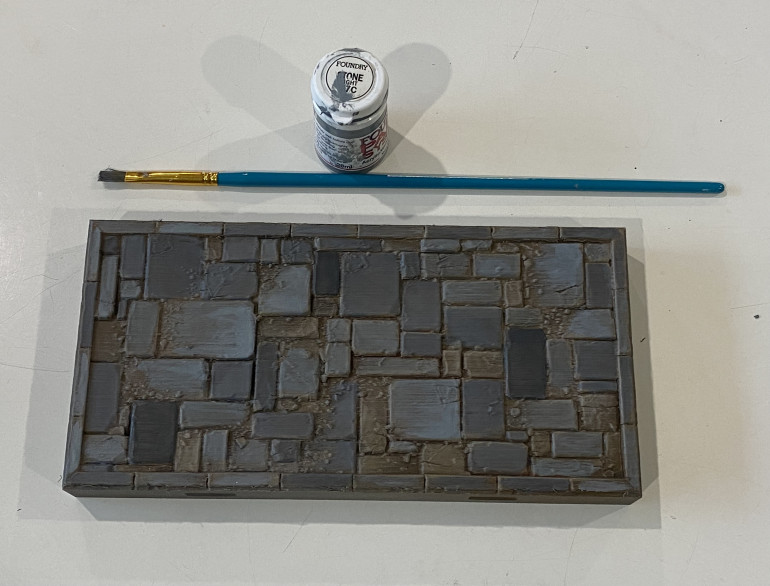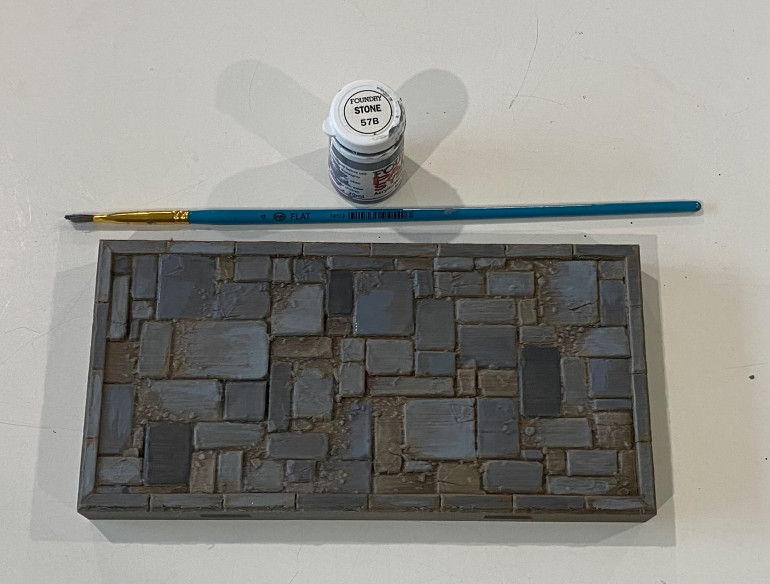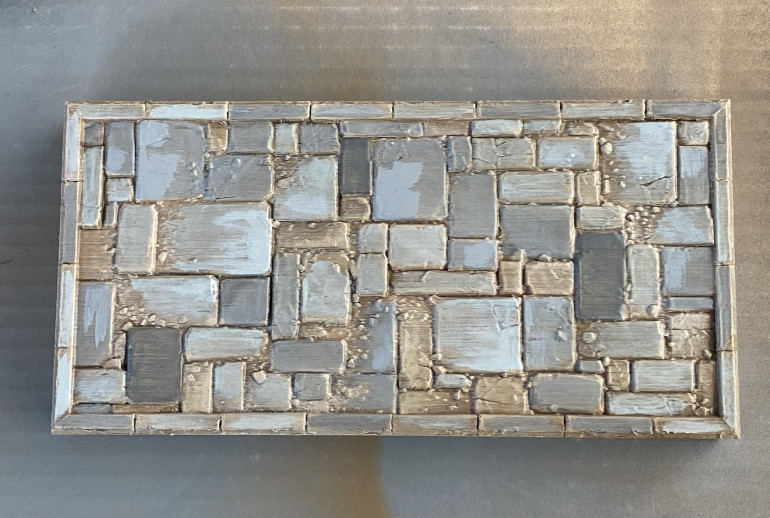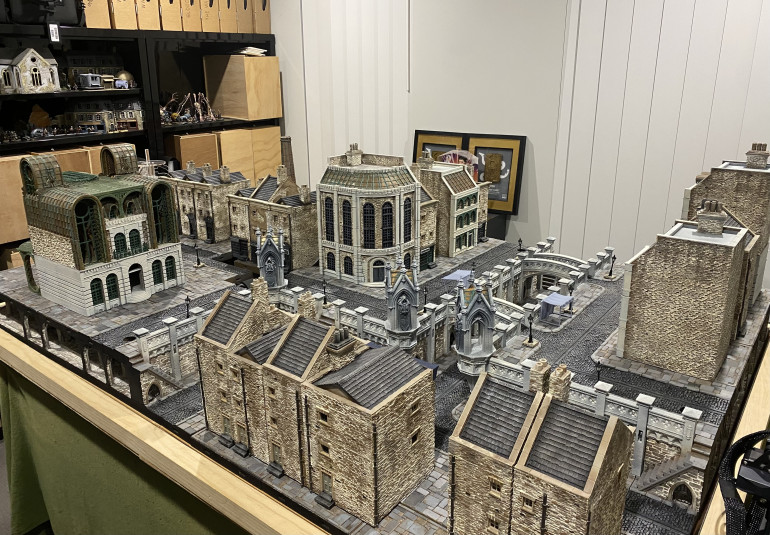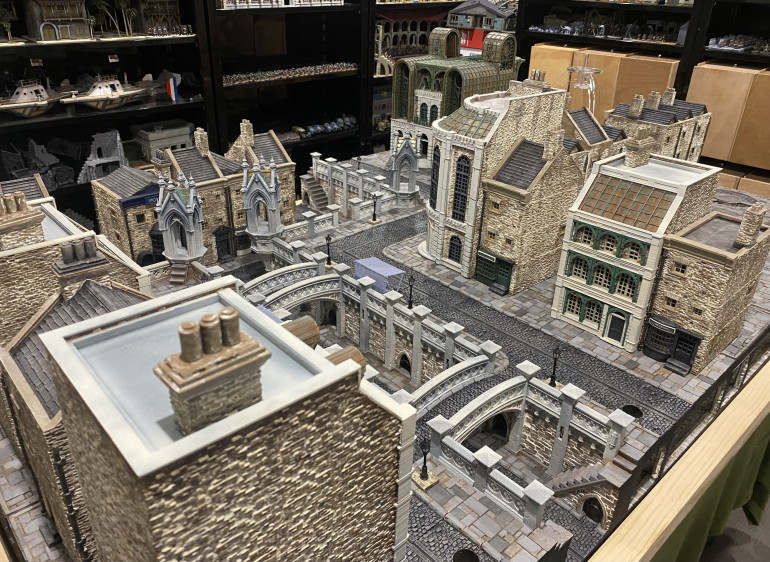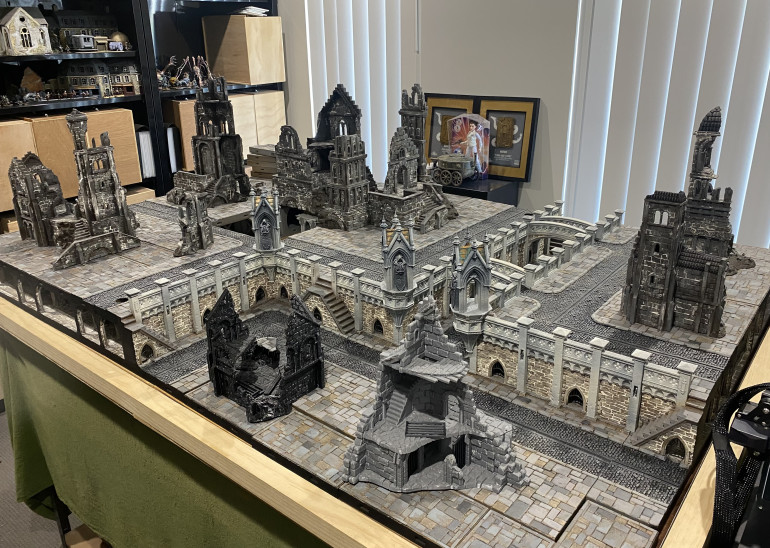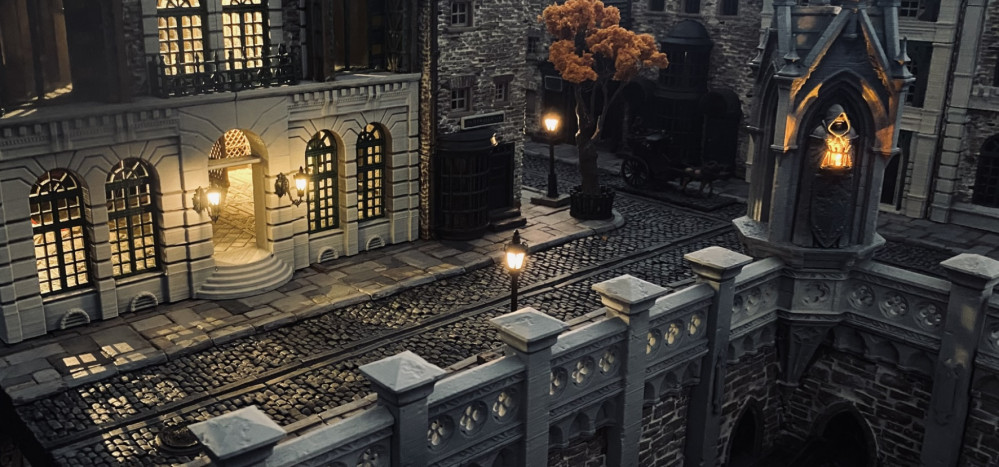
It’s going to be something…
Recommendations: 1181
About the Project
One day Gothic Horror, Victoriana, Steampunk and Medieval Fantasy all met up in my head. They started to fight it out which would be the subject of my project for Terrainfest 2024. Limbs flayed as the battle commenced and it was not long before they were all strewn across the floor in a tangled mess. This is my approach to this. Chuck it all in a pot, mix it up, and see what comes out.
Related Genre: Weird
Related Contest: TerrainFest 2024
This Project is Completed
The Plan.
I love making terrain.
I love making terrain way more than any other part of the hobby. Now, my terrain has spread from the games room to the garage, and I am running out of space for more.
So, I must be mindful that whatever I do for this must be as ‘usable’ as possible.
By that I mean this must cover as many systems as possible, both those I have and those I have my eye on for the future. Looking at you Guards of Traitors Toll and Trench Crusade.
Currently, I have the following themes on the ‘to-do list’
Gothic Horror both in 28mm and 55mm
Victorian Science Fiction in 28mm
Fantasy in 28mm and 32mm
Dark Grim Future in 32mm
So not only do I need to do something that I can use for any of those settings it also has to be flexible enough to scale from 28mm up to 55mm.
On top of that, I would like to incorporate my entries from Terrainfest 2023, that being my Gaslight and Port Blacksand projects or at least be compatible with them. I don’t need to incorporate all of each of those projects, but it would be nice to have the flexibility to at least use some of it.
I would also like to use mixed media with this and include Resin Prints, Filament prints, scratch building and conversions. Some electrical elements would be nice too.
However, the key thing is that this set-up is interesting to look at but also, and possibly more importantly, playable.
I will also add that the idea of the build is for skirmish-style games with, mostly, individually based figures.
Well that all sounds rather simple.
Disclaimer – Some of the buildings shown in some of the photographs were built last year, they are included in the pictures not to mislead anyone but rather so that you can see how this year’s build is tying in with last year’s build to hopefully show the layout I am doing this year is to compliment last years and to also expand on it. Last year was all about the buildings. This year the focus is on the tabletop and a few additions to help fill out the board to give a more lived-in look. The sewer system is a complete remake of my older version, and completely different.
Focusing on the plan
I figured I should probably make a start documenting stuff on here as I have a terrible habit of cracking on with stuff and forgetting to take photographs.
My miniatures games table is currently a 4′ x 6′ set up with a raised wooden area around it. On top of that, I have laid all my neoprene mats. On top of that, I have a couple of sheets of 3mm MDF so that I can still use the table as a work surface without the risk of damaging the mats beneath.
Now I do like gaming mats and think they have improved how we used to play games on a dyed green dustsheet with roads and the like marked out with felt and masking tape. However, I want to add some extra layers to the playing surface and build something to, hopefully, lift my set to another level.
This will also have to be in smaller sub-structures so it can be removed and stored away when not being used.
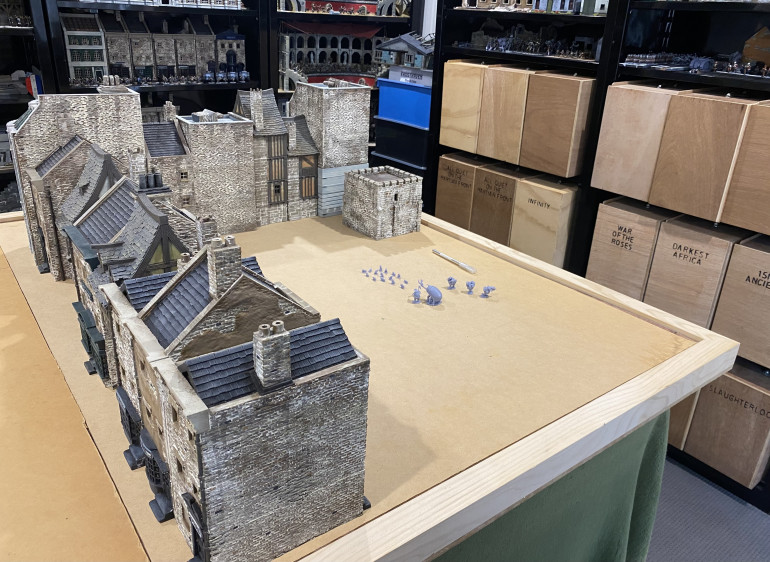 Disclaimer - The buildings on the table set up in this picture were built last year. Some of my buildings laid out on my gaming table. Sure, its playable and serves its purpose, but look at how flat and sterile it is. It needs texture and contours or levels to really make it feel like the buildings and ground are supposed to be together
Disclaimer - The buildings on the table set up in this picture were built last year. Some of my buildings laid out on my gaming table. Sure, its playable and serves its purpose, but look at how flat and sterile it is. It needs texture and contours or levels to really make it feel like the buildings and ground are supposed to be togetherI could just put the buildings on the cobblestone mat I have, but to be honest, the mat I have is not the nicest and I don’t want to be hypnotised by the mind-bending effect of 6′ x 4′ of grey cobblestones staring at me in the face. You know what it’s like, in small pieces patterns look okay but once you have a large area of the same pattern it becomes a bit glaring.
There is always the option of investing in a different cobblestone mat with flagstone areas so that the cobblestone areas make up the roads, but where is the challenge in that?
So, my rough concept at the moment is to have a sewer system running around the edge of the layout to allow for easy access, possibly with a separate sewer network that is hidden beneath the roads that can be removed and set up alongside the main table.
A sunken road possibly lined with market stalls goes from one side to the other and opens up into a larger sunken area on one side.
A couple of bridges will span the two raised areas on either side of this sunken road. Ample space will be left without cobblestones for building placement.
Lighting is to be installed but in such a way that it can be removed and replaced with different-scale street lighting so the set-up can span from 28-55mm.
Modular so it can be deconstructed easily for storage and transport.
Of course, the exact layout is subject to change and may vary from the picture.
Colour Test
I knocked up a small sample piece from the Stormcrow range to test out some colours on. The sample has cobblestone and flagstone elements so I can see how different colours look next to each other.
Initially, I went with a grey primer and painted the cobblestones black. After that, I used a wet brush to highlight grey colours, using lighter greys on the flagstones. It didn’t look too bad, but it didn’t feel right. it looked too cold for what I was after.
I then approached it a little differently and used more browns and earthy colours to wet brush over the primer and I got a much warmer look.
I then added some simple ‘scuff marks’ to try to make it look a bit weathered.
I think I will probably use a brown primer rather than grey on the flagstone areas to help create a distinctive difference between textures whilst, hopefully, getting it to feel like the colours don’t clash with each other too much.
Thoughts?
Of course, the base terrain has to fit and feel at home with the current buildings which I plan to incorporate into the layout.
The look I am aiming for is that these streets are lived in and in constant use whilst also being able to represent something gloomier should the need arise.
I took one of my buildings and placed it on the sample board piece to see if the colours would work together,
Even then it was worth remembering that my buildings also have other colours on them, it’s not just about the brickwork fitting in. So, I tested out some other views of building to see if the colours I had used would work.
I also have some more ‘fancy’ buildings that have large areas of an ‘off-white’ colour on them. So, whist at it I thought I should probably put them against the floor tile too,
So that is where I am currently at. Any thoughts, ideas or suggestions are very much welcome.
Cheers.
Colours
I’m still playing around with colours for the flagstones. The previous ones felt a little too yellow and green, so I’ve had another bash this time with more earthy greys.
I’m still not 100% happy with them, but I will keep working on them until I come up with something I like the look of.
Once I am happy with how they will look I will endeavour to share my colour palette with you.
I haven’t even started on the cobblestone yet, so I need to keep in mind the colours may appear completely different depending on the colours they are next to, and of course the lighting.
Progress
Progress.
Please ignore the Ancient Roman buildings to the Right and the WW2 Carentan Buildings to the left, they are both projects that have had to be put on hold for the time being, so I have room for this project. I will get back to them possibly in the new year.
Anyway, moving forward.
My small army of robotic helpers have all been working 24/7 churning stuff out, so I now have almost a 4′ x 4′ basic table set up. There is still a bit more to do, supports to go underneath to keep the raised areas, raised and a few more cobblestone tiles to finish off in places.
The idea is that each of the raised areas has three access points from the lower level, and access to the sewer system that will run around the edges of the board, and possibly into a removable section that can be taken out from under the main larger raised area for an extra element of gameplay.
The sunken road from front to back will have market stalls along its length, some of those spilling out onto the raised areas to help add an extra element of cover during use and also to blend the market across both levels.
I have to add holes for streetlights so that I can wire them in, but I’ll do that once I can get a better idea of how things will look with the buildings on.
A little image of part of the sewer system that will run around the edges of the board. These will also have lighting installed in them, all being well and if time permits. It will allow players to try to sneak around the board and pop up from the manholes along the roadways.
Chucking a few buildings around
I decided to plonk a few buildings around just to get a feel of how things may look. This is not the finished layout and is of course subject to change at any point. This was just a chance for me to try and visualise how things may look with my Gaslight buildings. There are a few little bits that will be replaced to give a more fantasy feel for when I replace the buildings with my Port Blacksand buildings, which I am hoping will come in useful for Guards of Traitors Toll.
I printed a few different market stalls and spare canopies to get a feel for what I could make the sunken road look like. I will have to do a mixture of both Fantasy and Victorian-style market traders so that I can swap them out. I will also have to make sure everything is removable for when I want to use the board for 55mm Gothic Horror.
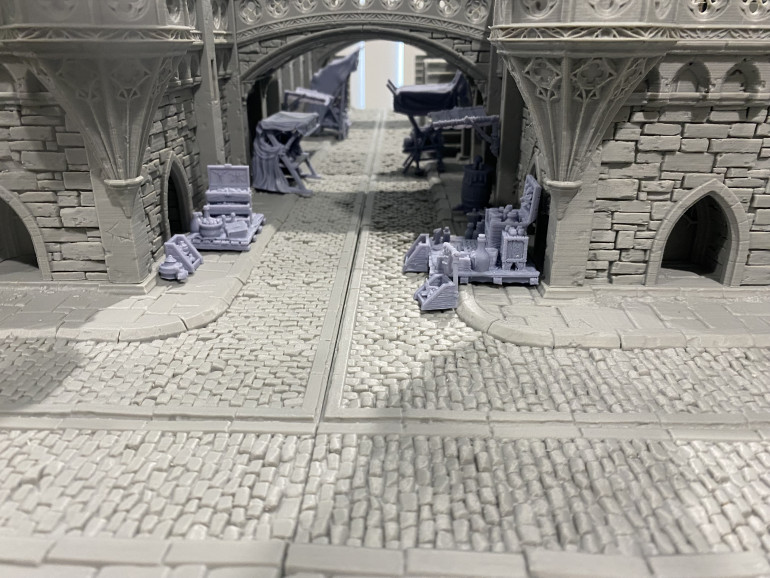 This is where the slums area is going to go, near some steps going down into the sewer system. Thinking a mix of wooded and brick buildings here, maybe some with scaffolding holding them up.
This is where the slums area is going to go, near some steps going down into the sewer system. Thinking a mix of wooded and brick buildings here, maybe some with scaffolding holding them up. The entrance to the market street will be overlooked by gothic statues that will be lit with flickering lights, again these are removable so that they can be swapped out with something a little less Gothic and a lot more Fantasy.
I am thinking of turning a part of the board into more of a ‘slums’ area. The place with one of the sewer access points seems ideal. I think I will scratch-build a wooden building with an arched walkway to go where the blue ringed area is and then either replace the other buildings with more wooden-looking buildings or incorporate some wooden shacks attached to the buildings.
I think adding some wooden structure will give some nice extra colour and texture and contrast against all the stonework.
Colour Palette
I have gone with some of my favourite terrain colours for my colour palette.
For the flagstones, I have chosen some greys from the fantastic Wargames Foundry Paint range I have been a longtime fan of the Wargames Foundry colour system and think they were probably amongst the first to tricolour palettes with each colour having a shade, mid-tone and highlight.
On top of that for my colour choices, I have gone back to my tried and tested favourite browns. I use these a lot, so I took a sample of each to the local hardware shop and had them colour match them for me. It’s a lot cheaper this way and I still have plenty left over from other projects, so money saved there too.
Of course, all these colours have to go on an undercoat of some sort and for this project, I will use the same undercoat as I do for all my terrain.
Cheap grey primer followed by army painter leather brown.
The grey primer serves as a base so that if I miss anything with the leather brown is not too contrasting. Leather brown is my favourite spray paint and the basic colour for all the brickwork on my buildings. More of how I do my brickwork can be found HERE
I would highly recommend getting your local hardware/paint store to mix up a pot of whatever base spray colours you use. Especially if you plan to use the method, I use to get stuff done in super quick time.
While we are talking about paint, some of these washes are also a good investment for the terrain. They are excellent for weathering. My favourite is the light grey.
There are many ways to paint terrain and mine is just one method, I am not saying or suggesting that mine is the correct or best method, but it works for me.
I start off by using rattle cans for as much of it as possible. I don’t worry too much about masking stuff off, If I do plan to block an area off, I just hold a piece of card over it and let the overspray feather the edges. For small hard-to-get areas, I go at it as much as I can with every other colour before going back in and neatening it up a bit by painting on leather brown with a brush. This is where having the local paint store knock up a batch of Leather Brown paint comes in handy.
I then use a 1″ brush from the DIY store to drybrush brickwork areas in a cream colour. It doesn’t really matter what colour you choose as most of it will get wiped off later anyway, it just goes to help create variations in colour.
After that, the brickwork gets covered in fine crack filler which is then wiped off with a wet rag. The wet rag will also remove some of the cream paint, leaving just enough behind to tint the leather brown slightly.
The final look is my interpretation of London yellow stock bricks.
Lighting Layout
I completely forgot to post these.
I set out a few streetlights to get an idea of how they will look. Obviously, the plan is to have them so that they are not on individual bases and are wired into the board in such a way that they are removable.
I also stuck a few little wall pieces on the board to see how I could add some different height terrain to the layout. Nothing is final placement yet. I am just trying to visualise how it will all come together.
Slapping on colours
As mentioned before the basic bulk painting for my painting method is fast and easy. I use a cheap throw-away brush from the local hardware store, normally a 1″ brush and household paint that’s been colour-matched to miniature paint.
After that, I go in with a cheap flat bristled craft paintbrush and pick out individual flagstones with my selections of greys. For some, I leave the dry brushed colours showing.
I do these in bulk so that by the time I get through them, the first ones are well and truly dry. Then I add some wash over them in black and brown, wiping most of the wash back off with a paper towel. Again, I do this in bulk, so I don’t have to stop the production line I set myself.
Finally, I once again use some of the lighter grey colours to roughly highlight a few of the flagstones.
I keep these deliberately rough and quick because I like the colours to merge. After all, this is a backdrop really for the miniatures which will go on the table.
This is a really fast way for me to get these done. I can stick a movie on, or in this case, catch up with some stuff on YouTube and just knock them all out.
The walls, I have already covered in my Gaslight project, so I won’t go into detail here, suffice to say the brickwork consists of 3 colours and 2 of those are undercoats from rattle cans.
Where im up to
A little stock-take on where I am up to.
I have a fair bit of painting done, still lots to do and still lots more that my mechanical helpers and churning out for this.
The cobblestone roads will change as I am not happy with how they look at the moment.
I have heaps more to do, thankfully with my work I have been lucky in getting a block of days off all in a row. A new job is on the horizon though, so I have to make hay whilst the sun shines.
A quick tutorial
A really quick tutorial on my sewers. Call this part one if you like.
I’ll come back and do the woodwork and weathering in a later post.
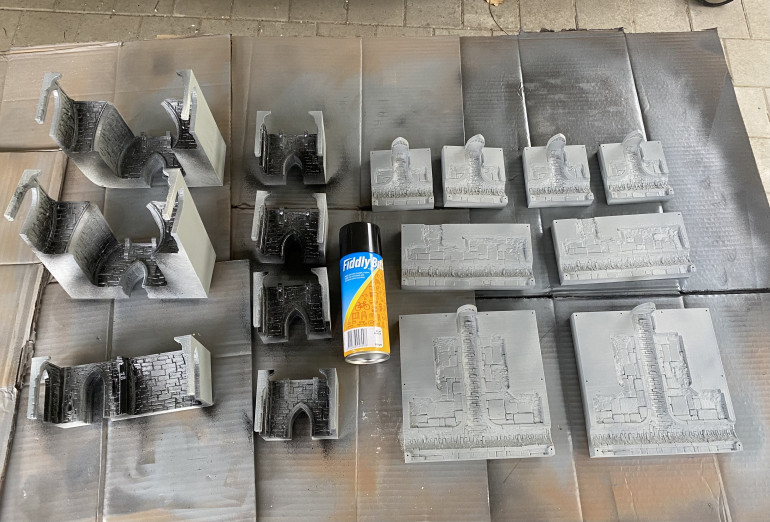 Cheap black primer to roughly paint in the sewer tunnels that are there to represent them going deeper, and a few shades in corners, although those are probably not necessary
Cheap black primer to roughly paint in the sewer tunnels that are there to represent them going deeper, and a few shades in corners, although those are probably not necessary 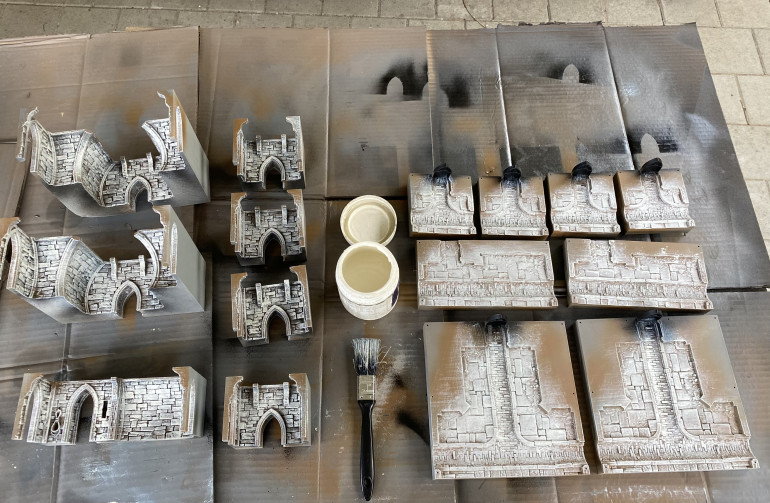 Really rough drybrush. For the sewers I went lighter than my walls and used this off-white colour. Plenty of life left in that brush I'm sure.
Really rough drybrush. For the sewers I went lighter than my walls and used this off-white colour. Plenty of life left in that brush I'm sure. 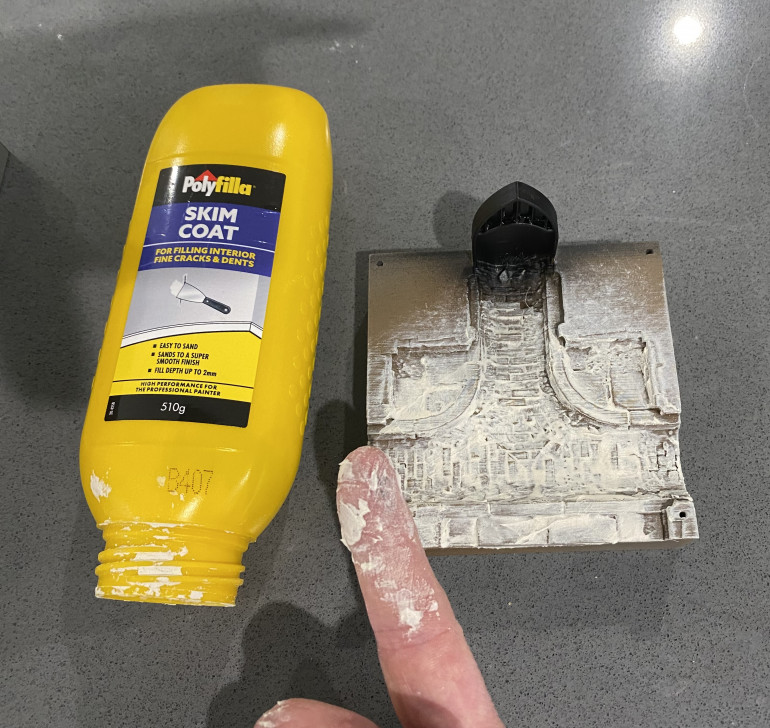 Small crack filler with a handy applicator, most people should find at least one of these in their home, if not more.
Small crack filler with a handy applicator, most people should find at least one of these in their home, if not more.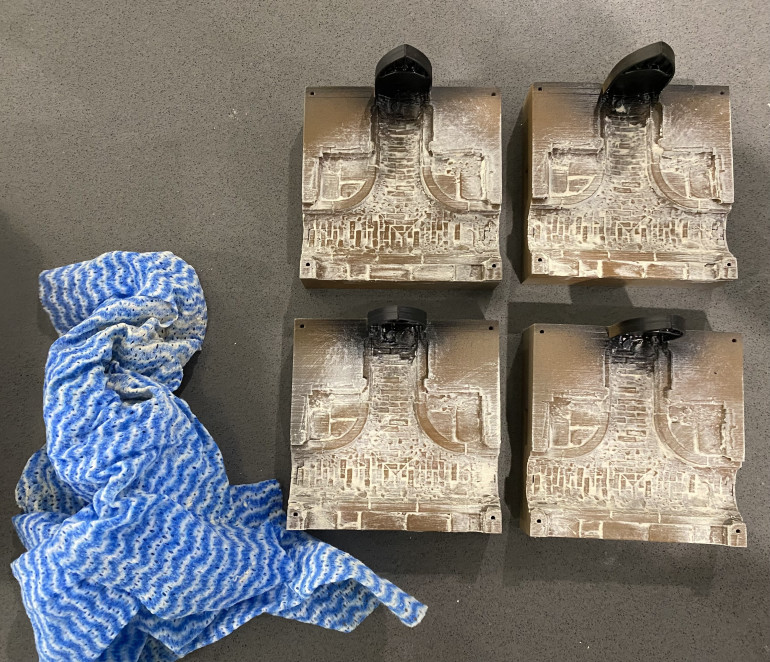 Damp cloth of some sort to wipe off excess plaster. I literally do 3-4 pieces and then wipe them off.
Damp cloth of some sort to wipe off excess plaster. I literally do 3-4 pieces and then wipe them off. 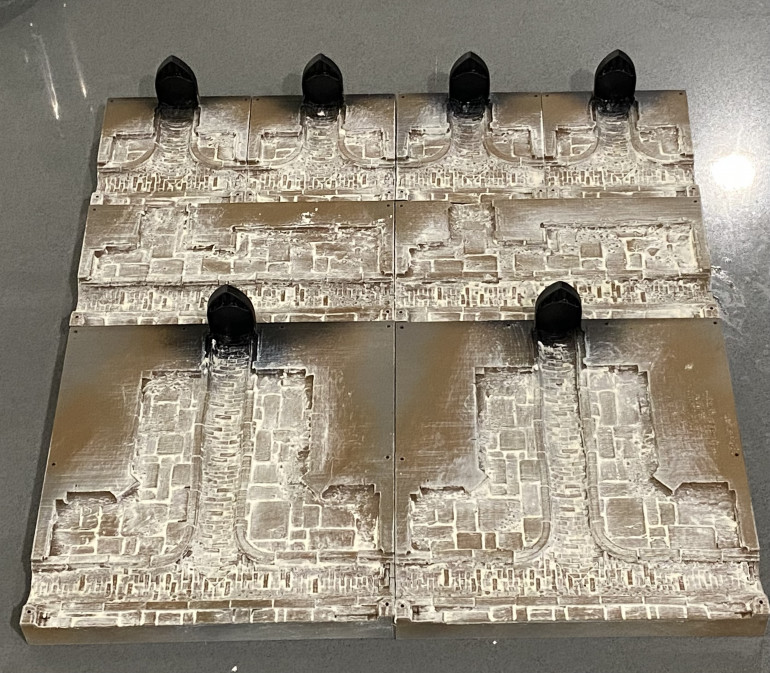 They end up looking something like this. You can scrub away with the damp cloth as much as you like. I like to add some variation so that some parts show more brown than others
They end up looking something like this. You can scrub away with the damp cloth as much as you like. I like to add some variation so that some parts show more brown than othersYou can now put those aside whilst doing the next batch. After the next batch is done, this lot will be dry enough to paint in the woodwork and use some inks to add some stains and the like.
Test Fantasy set up
Of course, up until now, I have only really been comparing the colour scheme with the board to my Victorian Gaslight buildings but that is only a part of the plan for this table.
I needed to make sure it would also look okay with my fantasy-styled buildings.
My fantasy buildings have a smaller footprint so I can get a few more of them onto the table. I switched out the Gothic-looking towers for something more fantasy, they are only partially painted so far. Removed the streetlights as I have other plans for the lighting for the fantasy set up and took a few quick pictures.
I still need to redo the cobblestones and do a lot more base tiles before I can start looking at the details.
Little bits
I few little bits that have been bugging me. The curb pieces need to change colour so they look different to the flagstones. Also, the curb pieces over the bridges need painting. The road still needs changing.
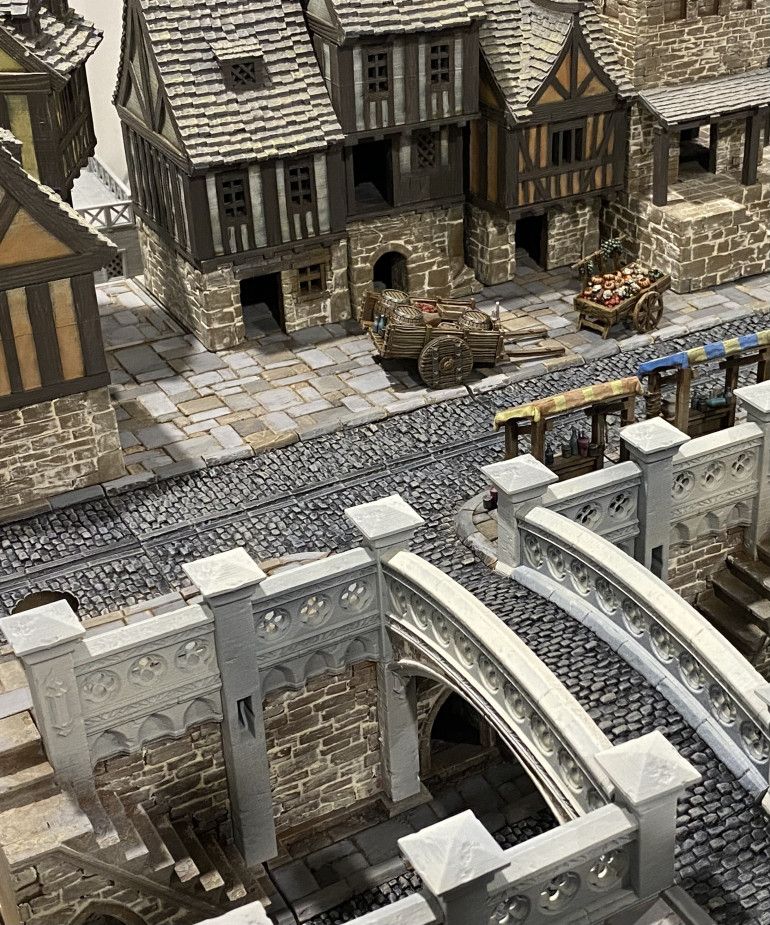 Disclaimer - The buildings on the table set up in this picture were built last year. The curb pieces just look wrong to me. I think I will lighten them all up so they stand out a bit better from the flagstones. Also I need to do the curb pieces on the bridges. The more I look the more I see little bits to adjust.
Disclaimer - The buildings on the table set up in this picture were built last year. The curb pieces just look wrong to me. I think I will lighten them all up so they stand out a bit better from the flagstones. Also I need to do the curb pieces on the bridges. The more I look the more I see little bits to adjust.Scale
Some quick comparison shots with
55mm Gothic Horror Figures
32mm or whatever scale Games Workshop figures are
28mm Scale Victorian Science fiction.
Aggressive expansion and small update.
I decided that I should make a few extra pieces so that I can rearrange the layout in different ways. This would also mean I can expand to a full 4′ x 6′ layout and have enough room to fit my Victorian Science Fiction Airport onto the board (once I actually finish that building, that is) and also increase the ‘slums area’, which I still have to make.
This would also mean I could add some more Fantasy style buildings to my collection in the future. It would be nice to add a tavern and wizards tower of some sort down the line.
I also found a little time to do some general tweaks here and there and fix up a few bits that were not quite sitting right for me. At the moment the board is all ‘unclipped’. Once I insert the clips it pulls the whole thing together and closes all the gaps. Once I have got all the individual tiles to the same level, I can give them some weathering to help tie them all together and then start clipping them together so I can start making some progress on all the extra bits to go with it.
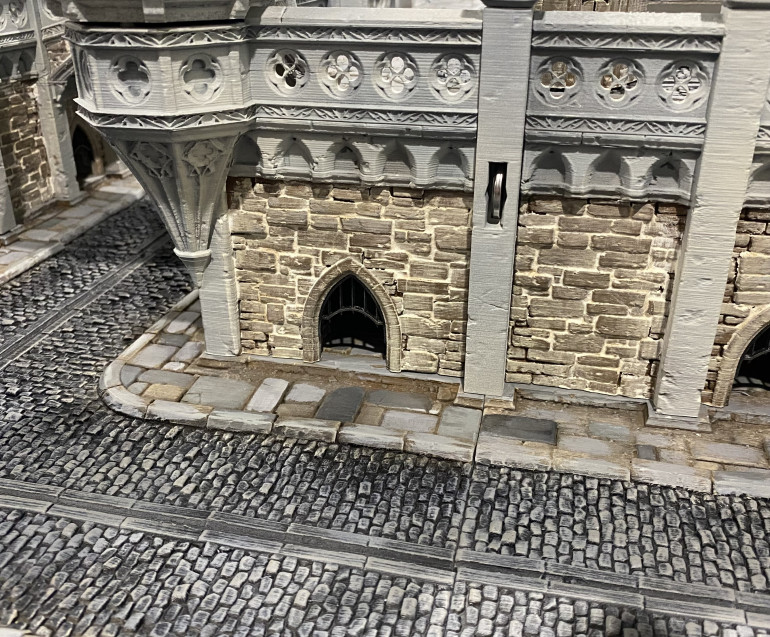 I have repainted the cobblestone road, added small grills to all the arches built into the walls, repainted the curb stones a slightly lighter shade, which I think helps separate the paving from the road sections better. I also inserted batteries into the pillars for the lighting.
I have repainted the cobblestone road, added small grills to all the arches built into the walls, repainted the curb stones a slightly lighter shade, which I think helps separate the paving from the road sections better. I also inserted batteries into the pillars for the lighting.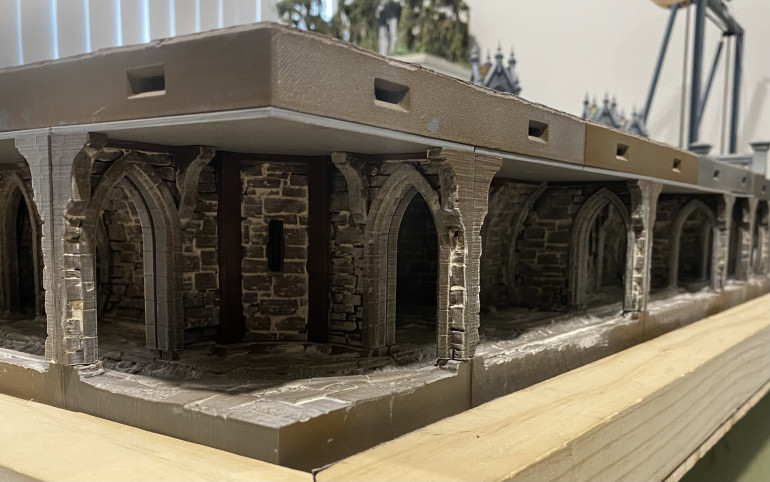 A view along one section of the sewer system that runs around the outside of the board, and will eventually expand into the board under the surface. I created small thin lift off roofs for all the sewer sections so that I can still use them without all the stuff on top and have a similar 'fog of war' effect as I have for my Dungeonalia project.
A view along one section of the sewer system that runs around the outside of the board, and will eventually expand into the board under the surface. I created small thin lift off roofs for all the sewer sections so that I can still use them without all the stuff on top and have a similar 'fog of war' effect as I have for my Dungeonalia project.Tower tops and light assembly
I quickly painted up the tower tops using a mix of black, brown and grey paints and a kid’s craft brush. I kind of wet-brushed it over and mixed it up on the model with my finger to create a weather and worn look. I like my terrain to look a bit rustic.
For the lighting, I have two ideas in mind. One for the fantasy setting and one for the Victorian setting.
I used 3D-printed elements with a 3v yellow flicker bulb to create a plug that can fit into the collum and sewer walls. I then went onto a 3D building program and quickly designed some plugs that I could use to replace the lights and that would also match the aesthetic of the table.
These plugs can then be easily interchanged depending on whether I want lights or not.
The simple decoration without the light still needs to be painted of course.
The batteries can be replaced by removing the columns and pushing them out via a hole in the back.
I also added lights, to the Gothic statues, which are also removable.
Because the lights are all removable I can also change the colour of the lights easily, so it’s possible to have an eerie green glow if I choose, or in fact almost any other colour.
Sewer tutorial part two
Here is the second part of my really simple guide to the sewers.
The woodwork is painted with, you guessed it, Leather Brown. I used a cheap long long-handled craft paintbrush. The long handle makes it easy to get into the terrain. Slightly watering down the paint makes this a speedy process.
I then very quickly dry-brushed the rope with Wargames Foundry Rawhide Mid-tone. This is another of my favourite colours. Of course, you can use any colour you want, this was just the colour I fancied doing mine.
After that, yep you guessed it, Rawhide highlight from Wargames Foundry is lightly dry brushed over the rope.
Finally, I lightly streaked on some weathering using washes. Just a note that the black wash on its own is quite dark so I would suggest either watering it down or mixing it with the light grey wash.
The benefits of rimming
The next stage of the process was to paint all the rims. The benefits of rimming should not be overlooked. It creates a nice rim or border for your model much like a frame does for a picture. We do it with our miniatures so why not do it more with our terrain?
You can use any colour; the goal is to make the model look ‘finished’.
For dark damp passageways and that kind of thing, black rimming, in my opinion, is the way to go, although a very dark grey or brown could also work well.
If I was doing snowy terrain or rimming something with a lighter colour some soft earthy greys could look good, and for something green, maybe a more natural brown rimming.
Anyway, the point is, never underestimate how finishing off in this way can enhance other colours and create a nice effect.
The sewers also need some form of lighting. I have expanded some of the sewer network further into the board to create an illusion of depth This way I can put lights further into the board for different effects and give the impression that the sewers don’t just run around the edges of the table
Finally, a state-of-play shot of where I am up to.
I still have more flagstone tiles to paint, honestly, it feels like they are never-ending now. I am looking forward to getting them done so I can move on to the slum area.
I also have to do all the individual removable covers that go under the flagstone tiles to cover up the sewer network that goes beneath the board. These little covers will also raise all the flagstone tiles to the same height.
In this image, I have added some of the clips in place to pull the board together a bit better than in previous pictures. It’s getting there.
Hallelujah
The last stack of flagstone tiles.
I thought I would take the time to photograph the same tile throughout the process, starting at the point after the dry-brushing stage
With each stage, I do it quite roughly and don’t take too much care with what I am doing.
Thats it. All the tiles are done now. Just a few more bits to do to support the last of the raised areas and then I can move on to the fun stuff.
The state of play
There are a few more riser sections to finish to support the elevated floor. So, with that in mind, I thought I would make a start on the slum area.
The slum area will be quite a large area of the layout because the idea is, much like in Dead Man’s Hand I can set up the entire table and run different scenarios in different areas of the table. This way scenarios can flow across the board without having to reset stuff. The layout can be swapped around if needed but for each string of scenarios I would probably stick to the one layout as much as possible, just using different areas.
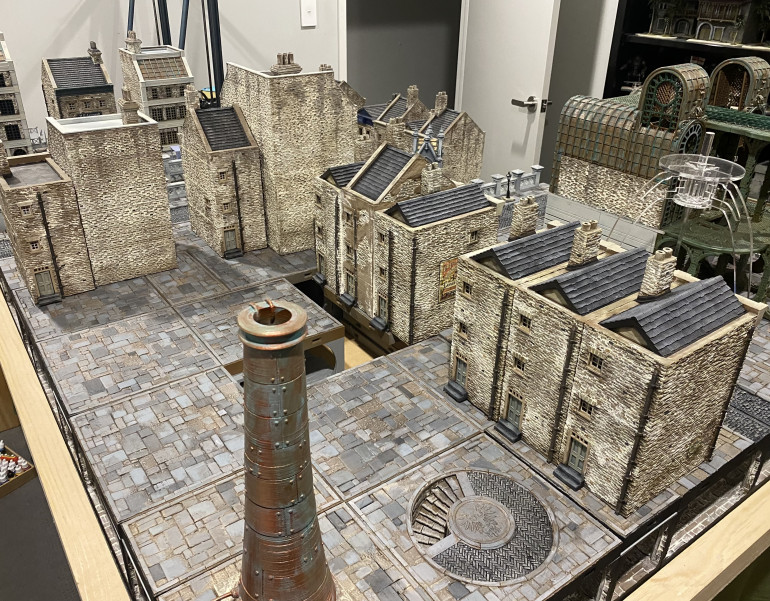 Disclaimer - The buildings on the table set up in this picture were built last year. This is where the slums area is going to go, near some steps going down into the sewer system. Thinking a mix of wooded and brick buildings here, maybe some with scaffolding holding them up.
Disclaimer - The buildings on the table set up in this picture were built last year. This is where the slums area is going to go, near some steps going down into the sewer system. Thinking a mix of wooded and brick buildings here, maybe some with scaffolding holding them up. I then had a thought, maybe I could also use this table for things like Mordheim or even, shudder, 40k when I get dragged screaming and kicking to have to play it with my mates.
I have lots of ruins, I mean lots and lots of ruins, so I set some of them up on the table. They won’t all fit but I can get about 50% of them on the board at any one time. That is not a problem though as it means I can swap things around.
I think if I give them a repaint, and do up a damaged bridge to replace one of the existing bridges and a few collapsed wall sections I could make it work.
Thoughts?





























